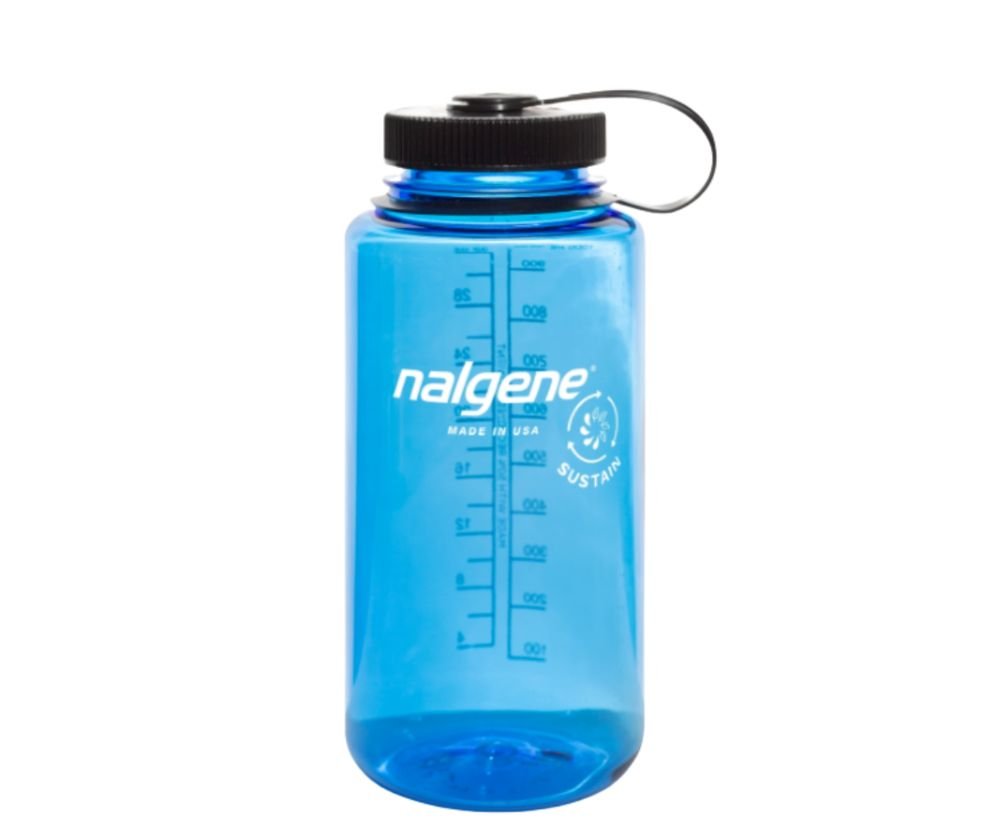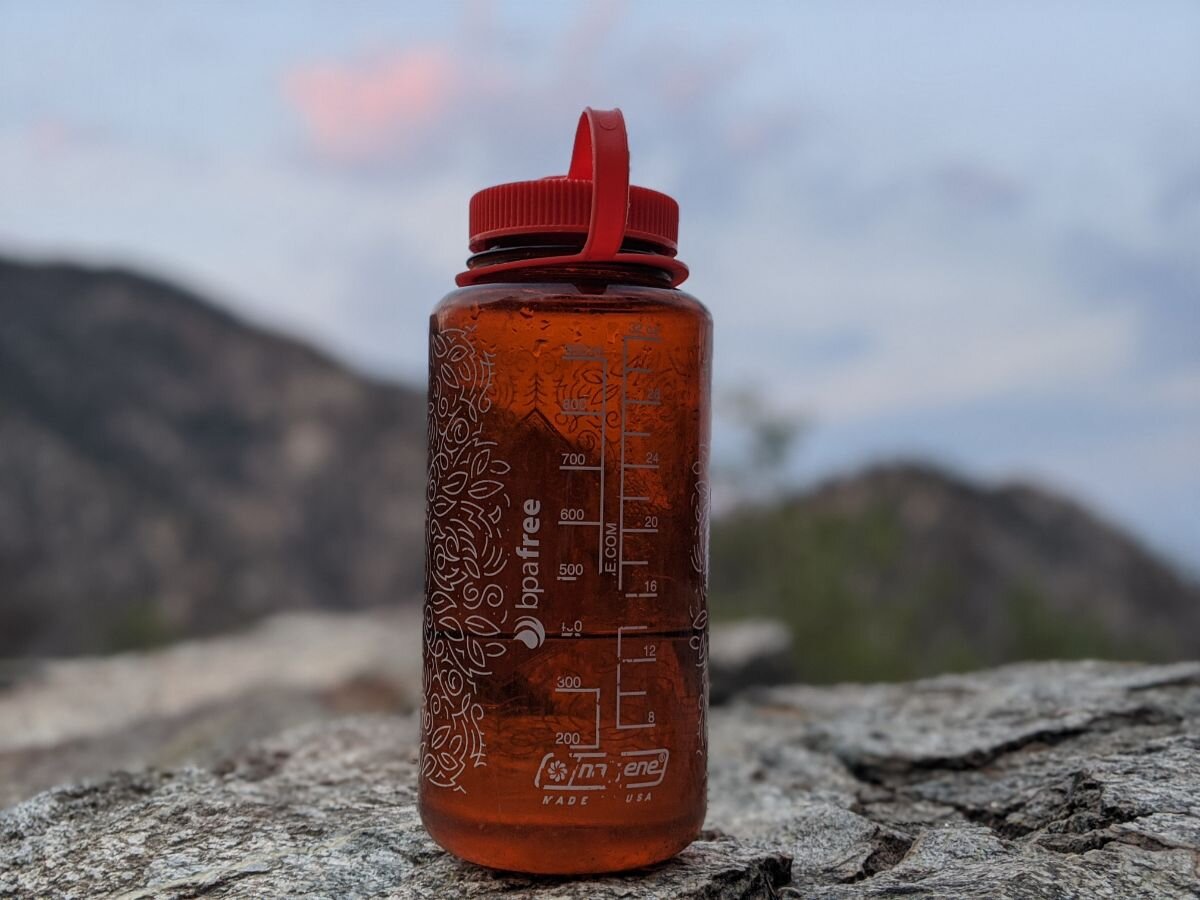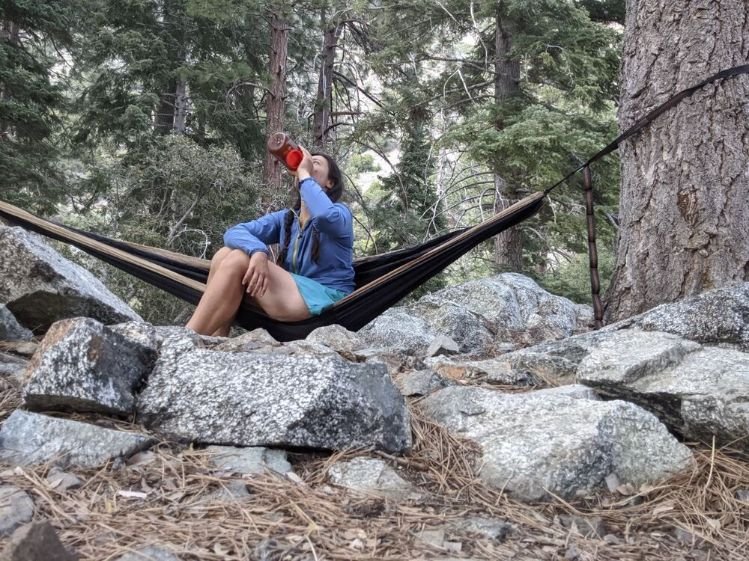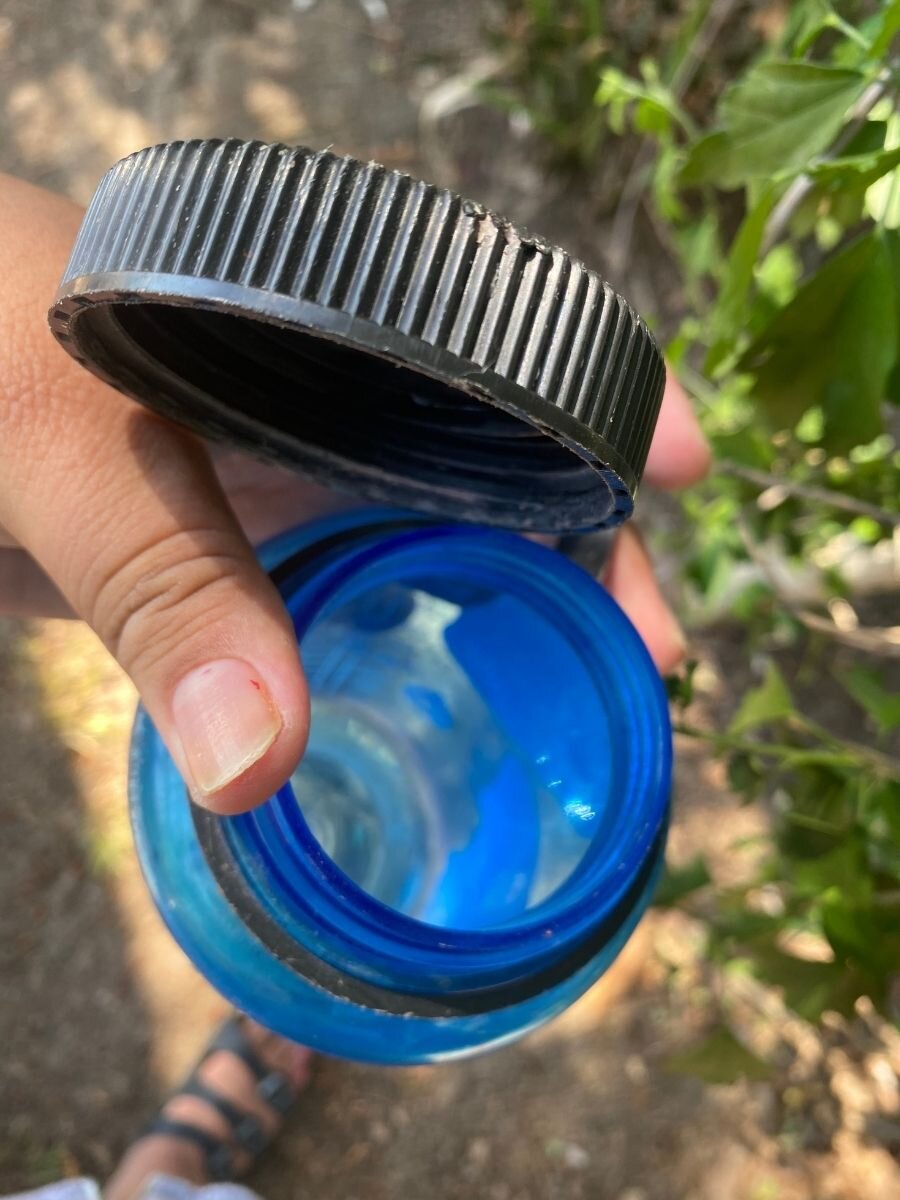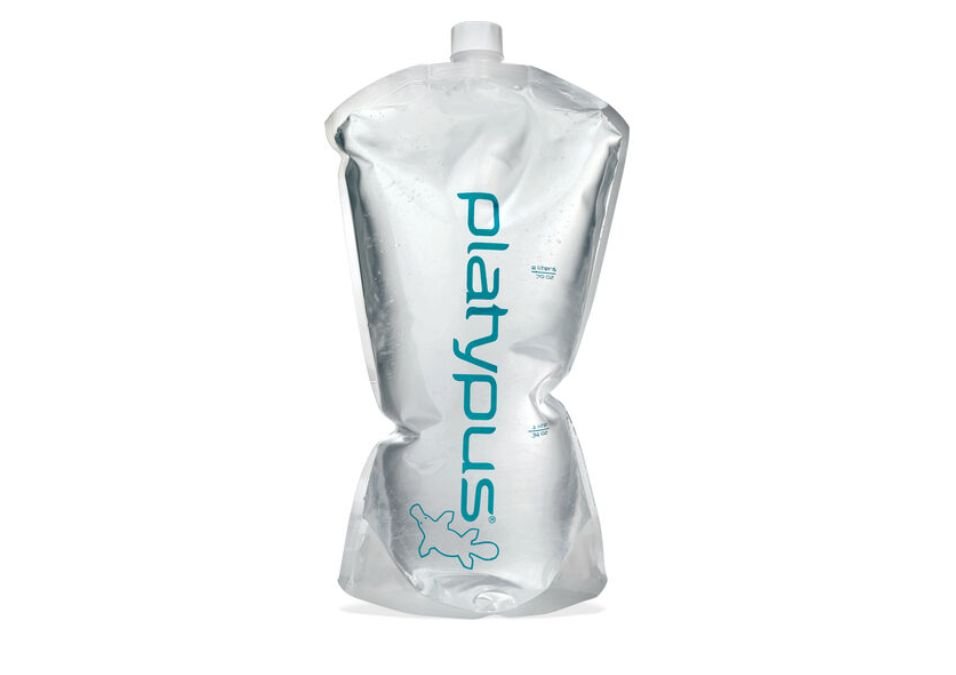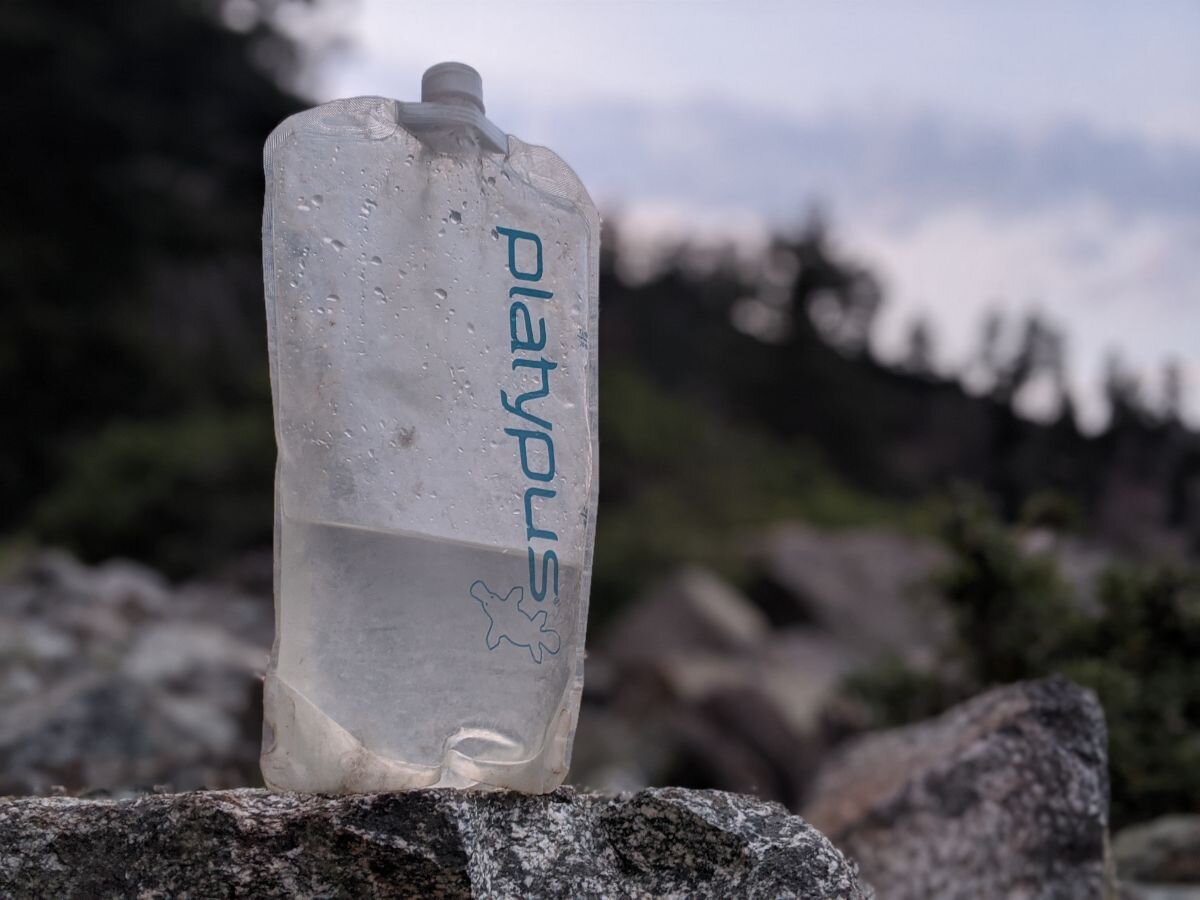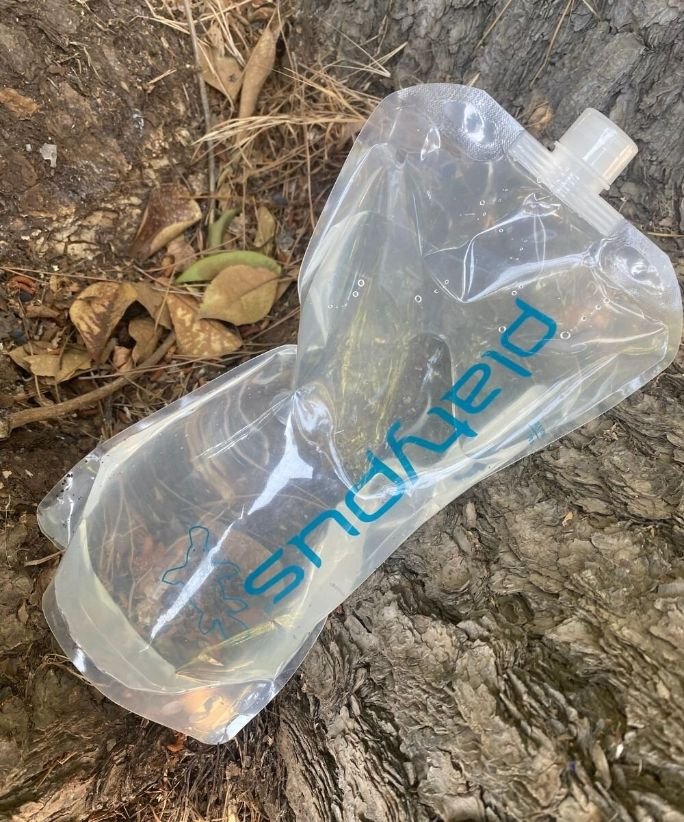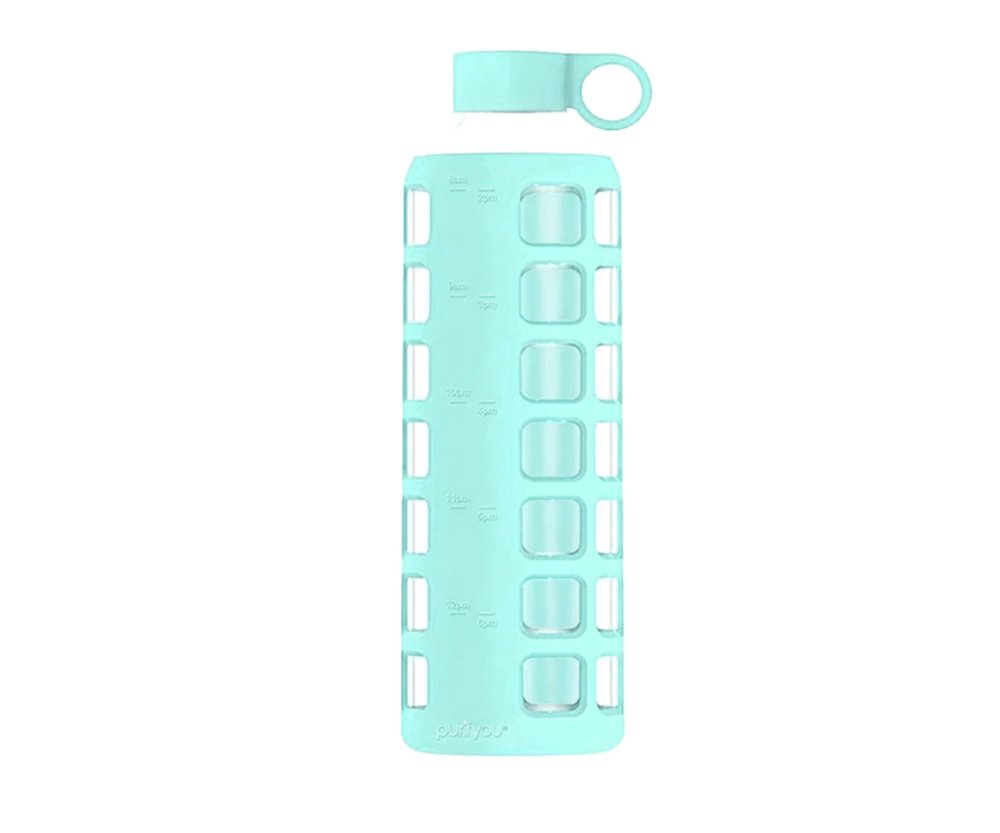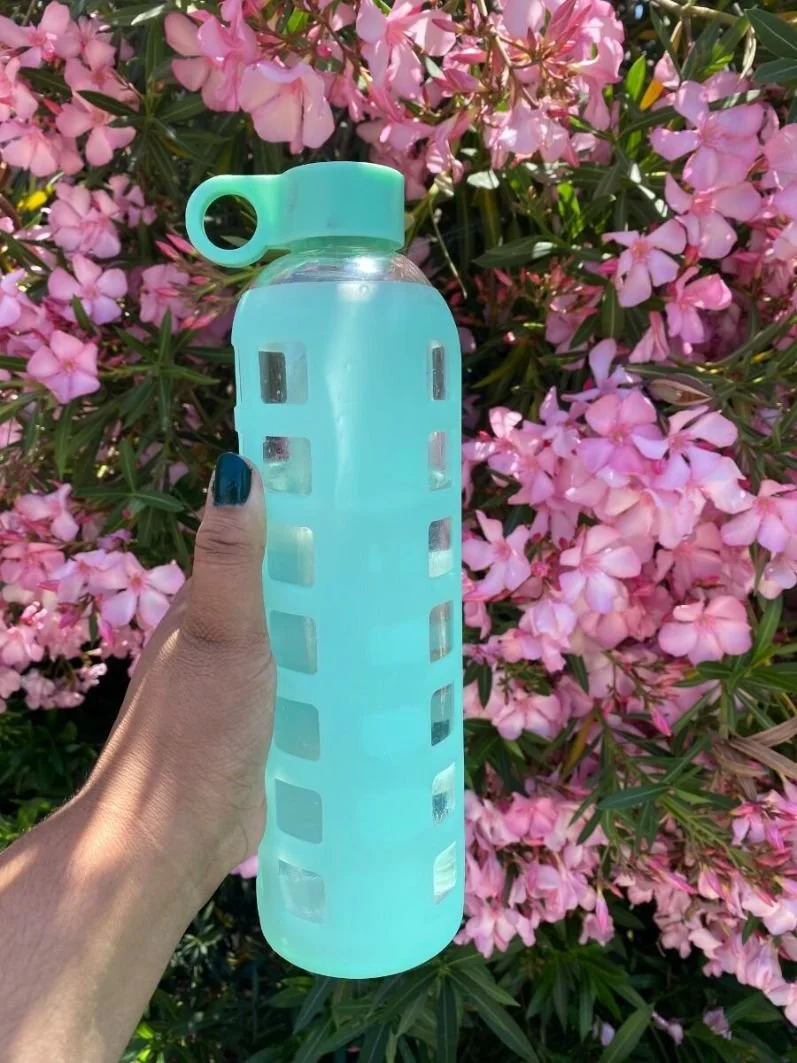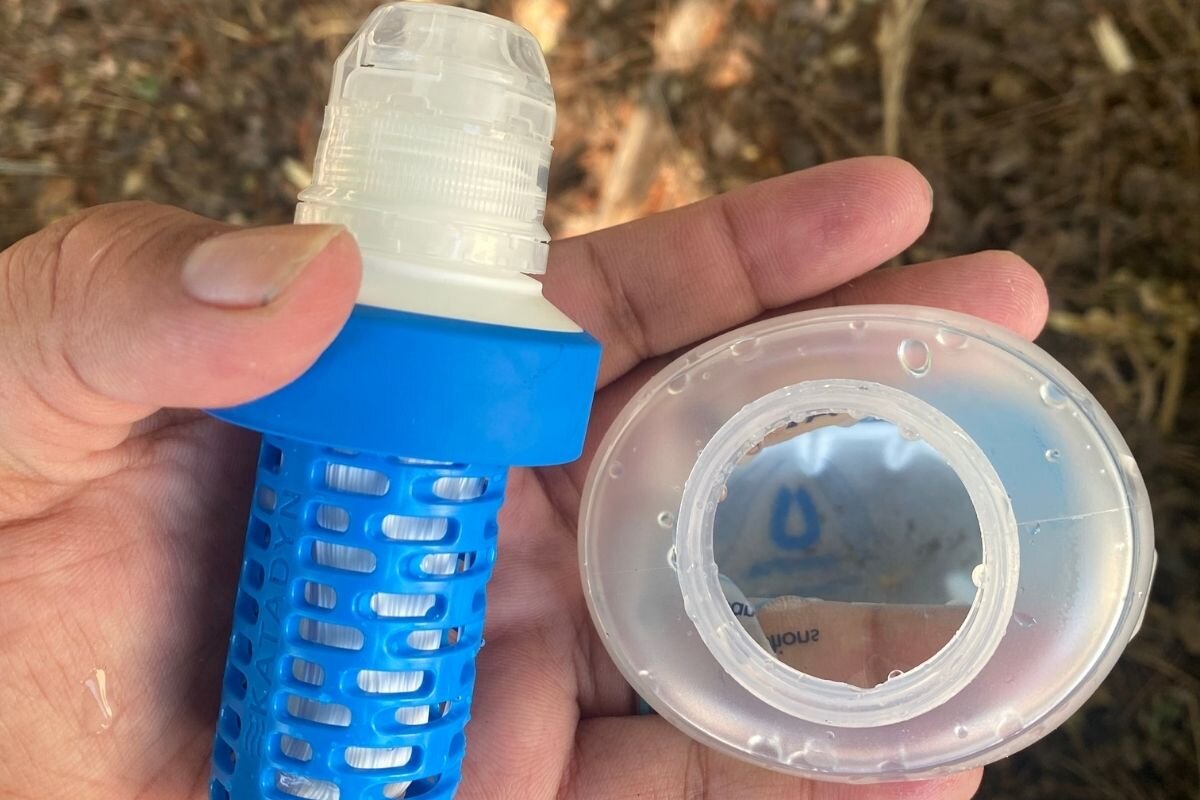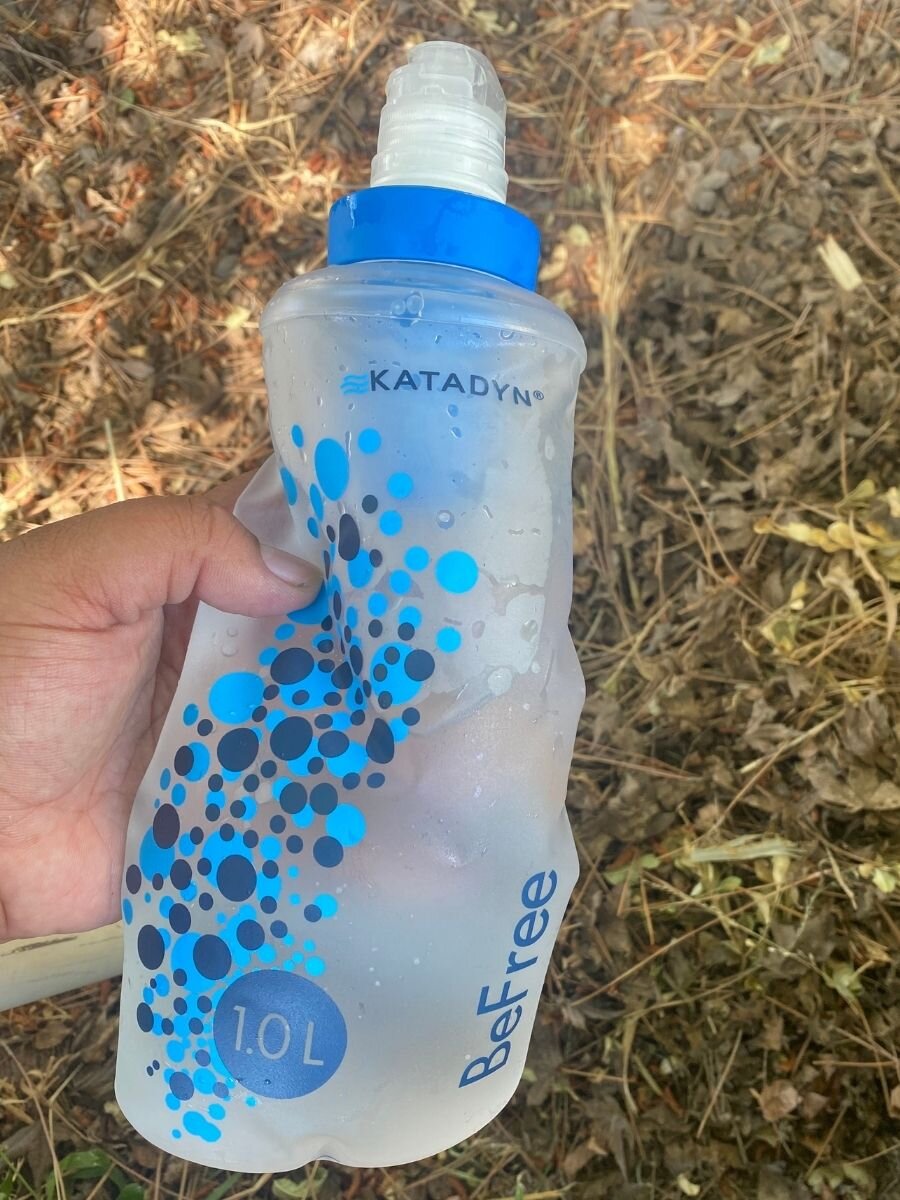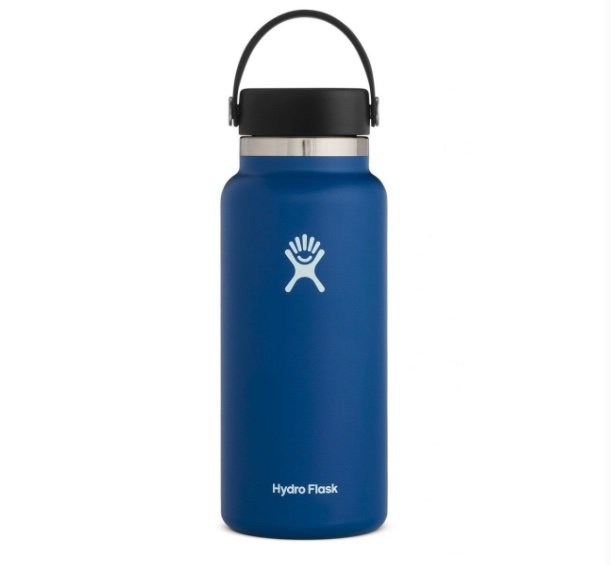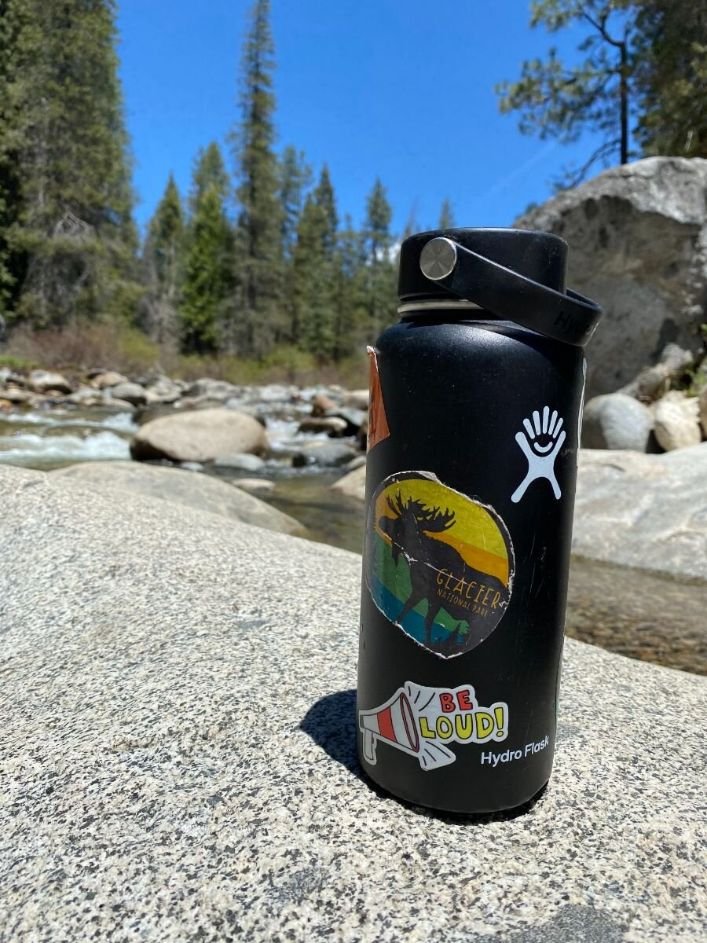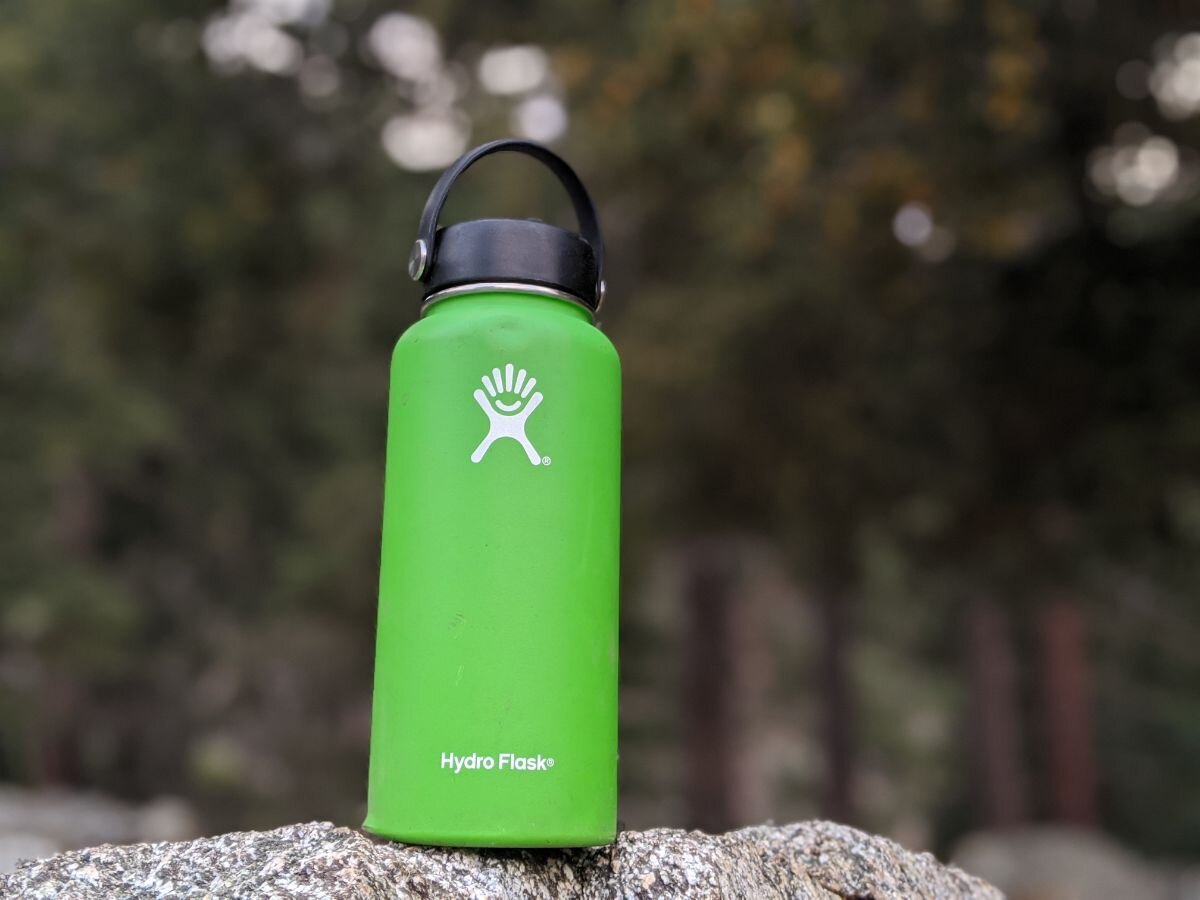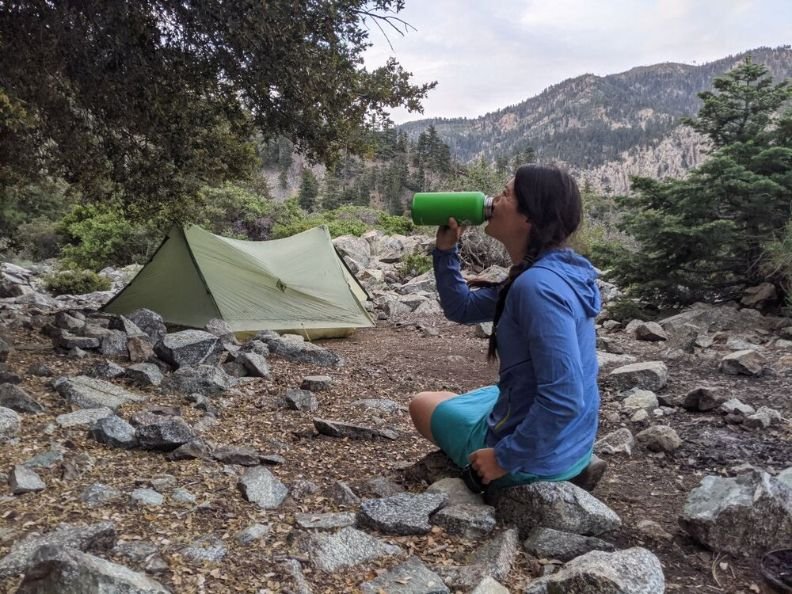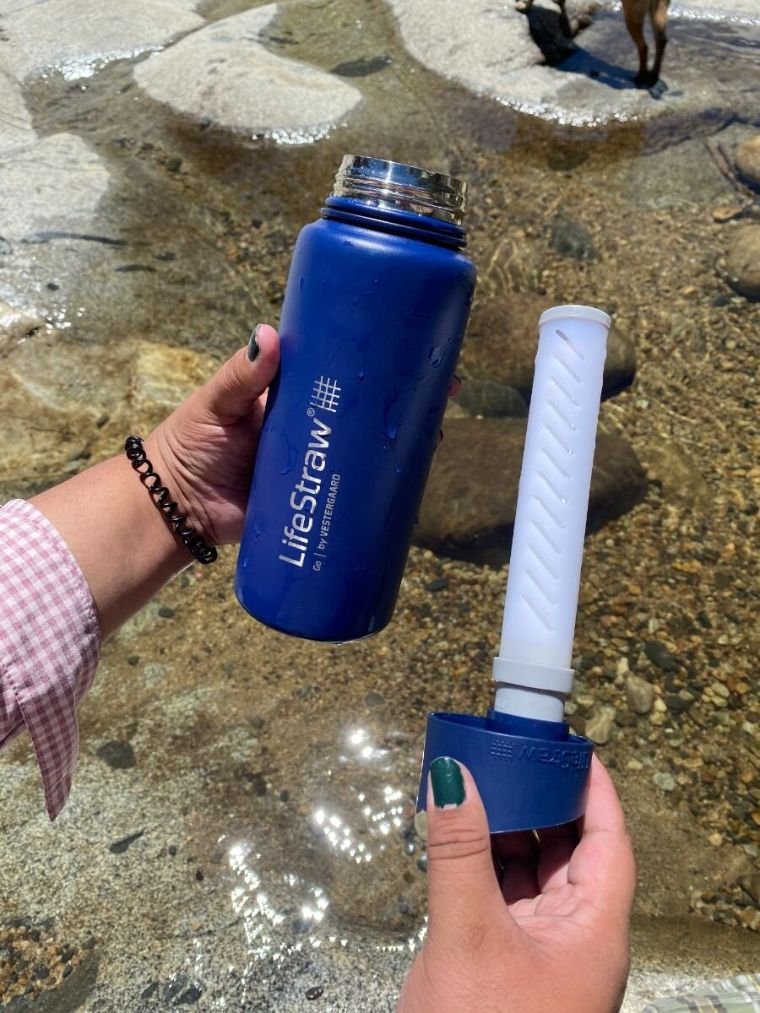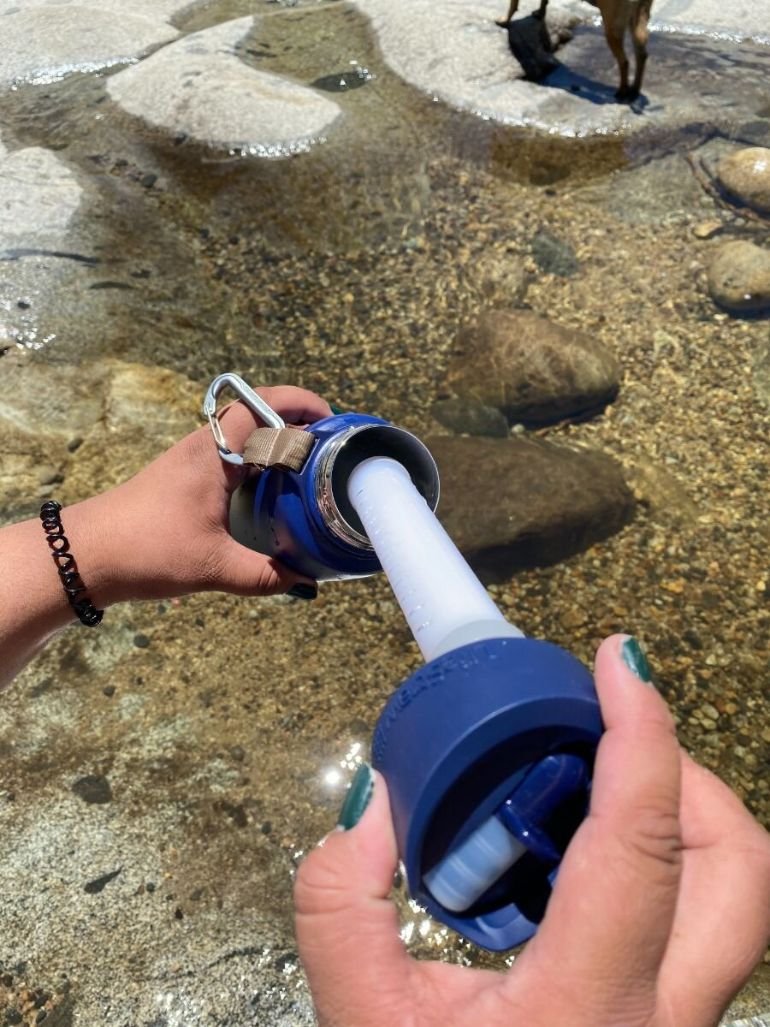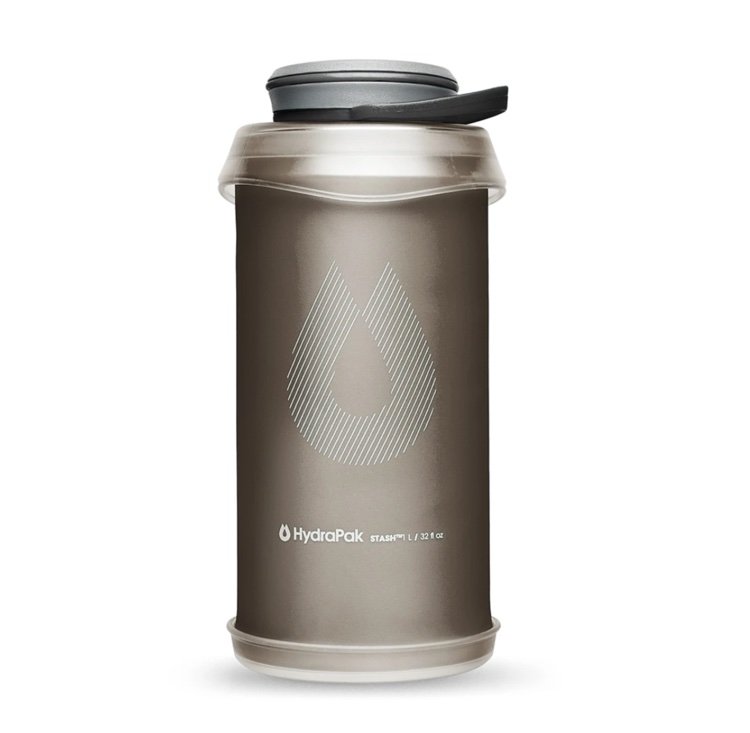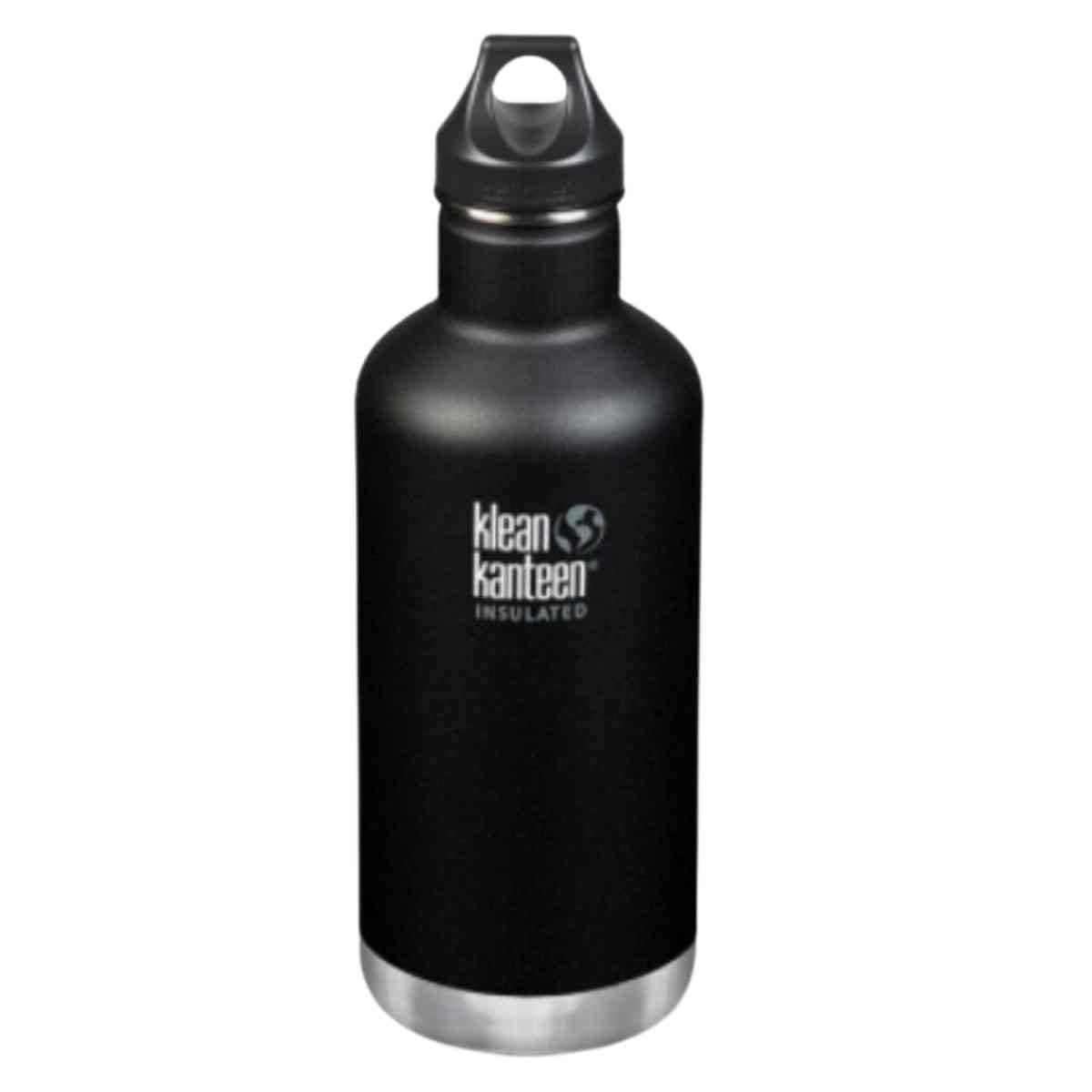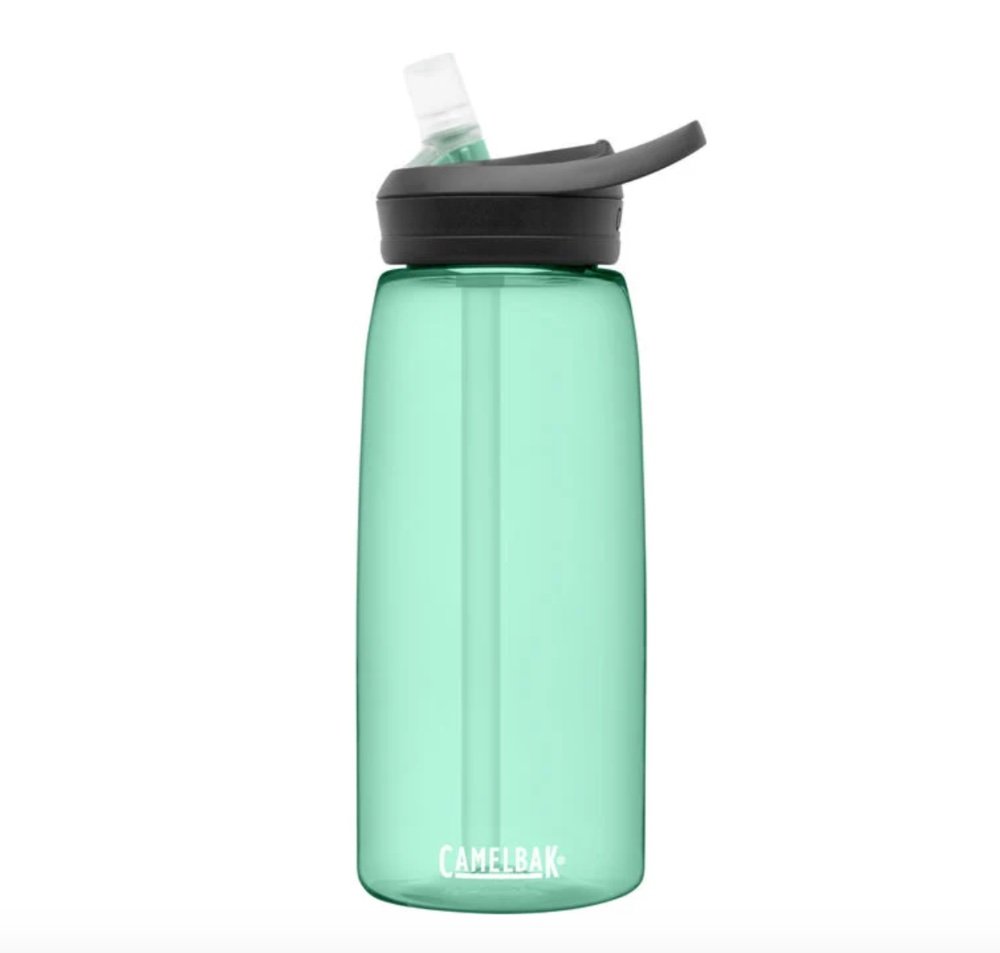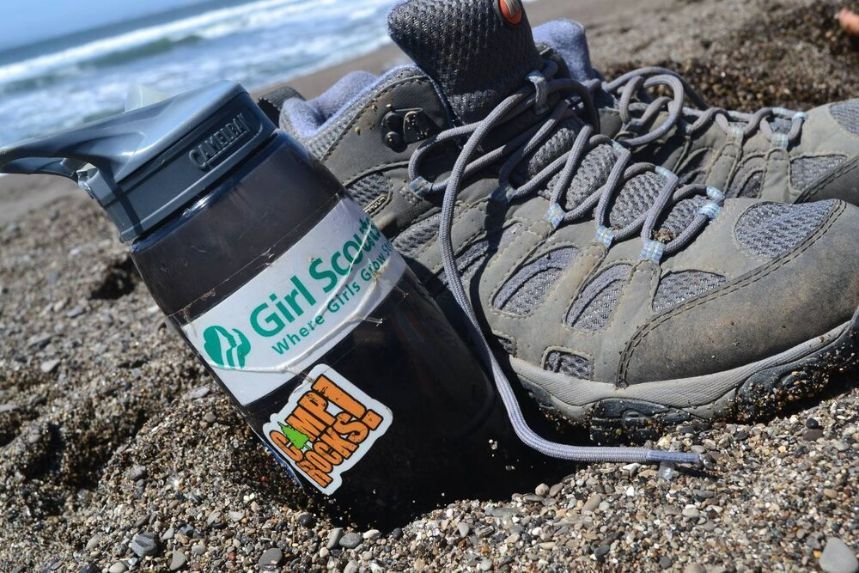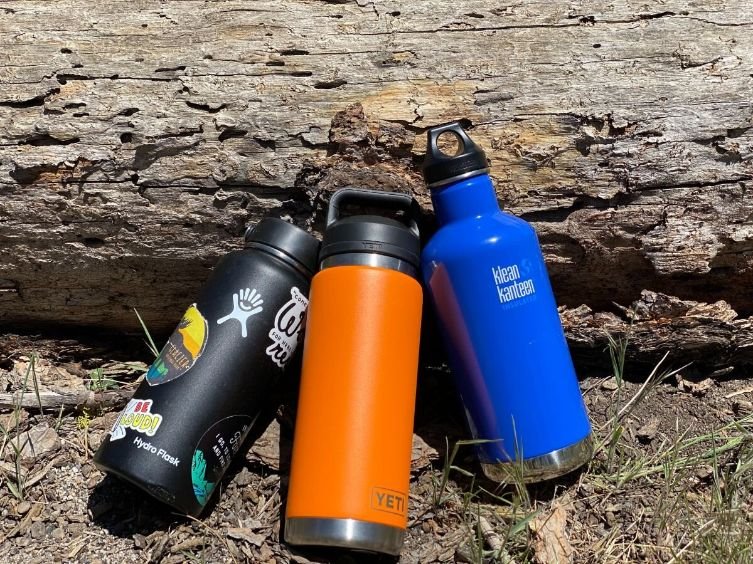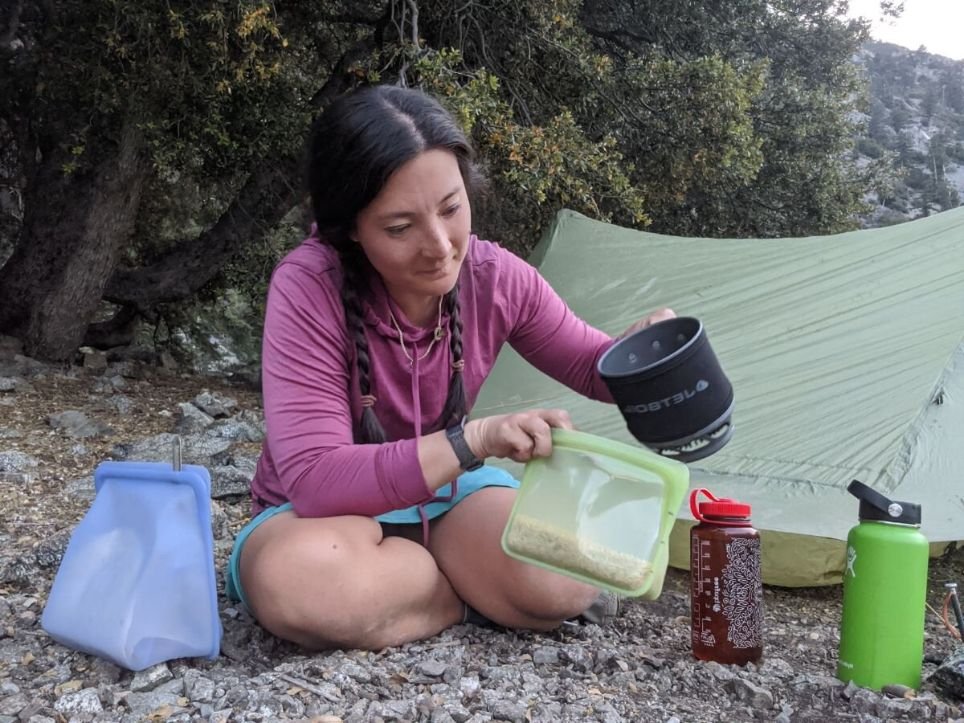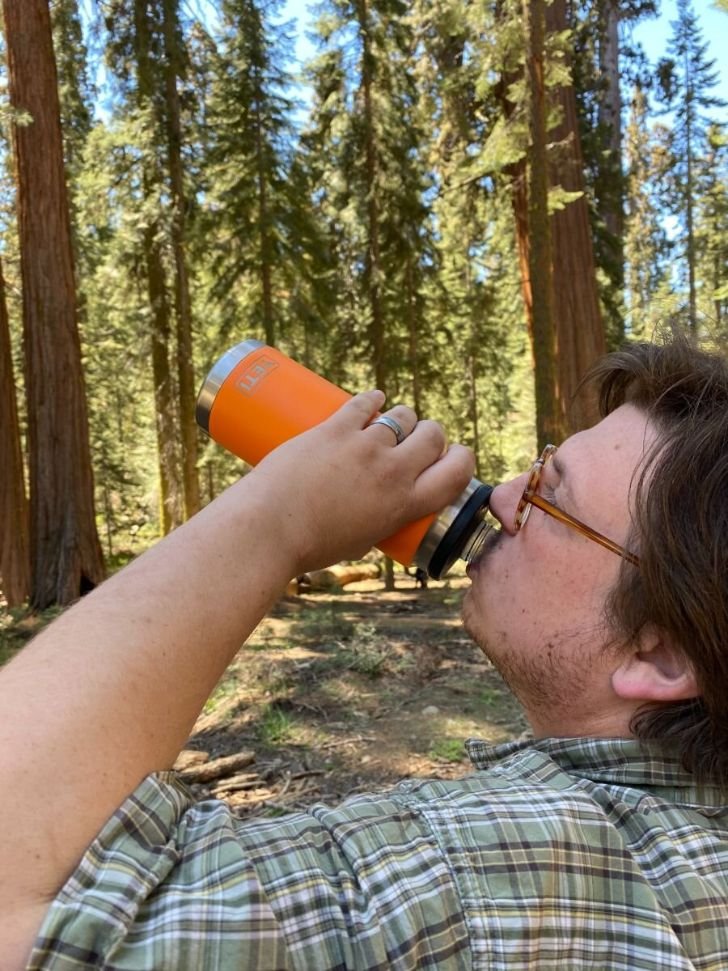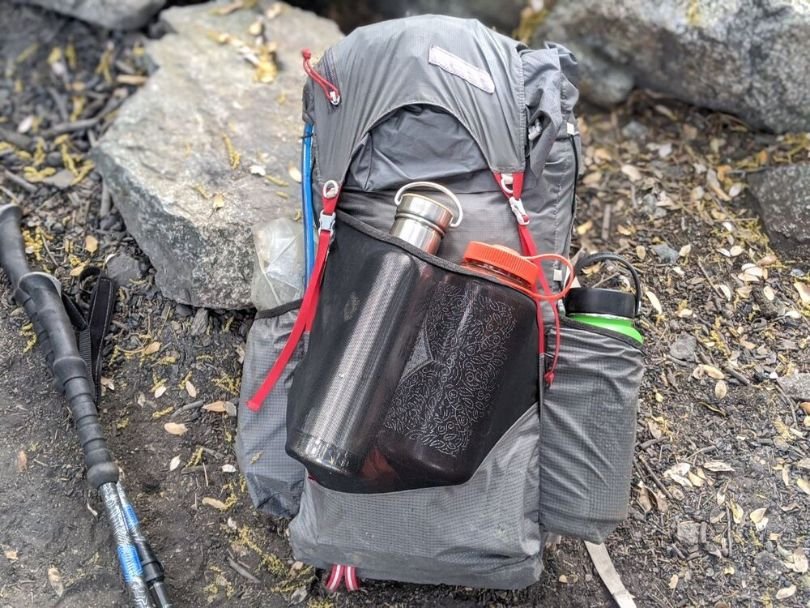Best Water Bottles for Hiking of 2024
Stay Hydrated on Trail with the best hiking water bottles and water bottles for camping
Home > Gear Reviews > Hiking
May 25th, 2024
Updated to include a new winner for best insulated and 4 other new water bottles we tested by Takeya and Stanley.
A good reusable water bottle often makes the difference between a wonderful hiking day spent in nature and a miserable, exhausting day under the sun. Water bottles are vital to keeping us hydrated on trail and safe when venturing outdoors — whether it’s for a day hike, a camping trip, or anything in between.
I have worked in outdoor education for almost a decade, leading youth on wilderness hiking trips and weeklong camping trips. Over the years, I’ve seen firsthand how important it is to have a good water bottle in your pack at all times. Reusable water bottles also support us in moving closer to no-waste living, as we’re not purchasing and disposing of plastic found in single-use disposable bottled water that often ends up in landfills and oceans.
We researched and tested reusable water bottles for hiking based on the factors that matter most to hikers: weight, volume (the amount of liquid that the bottle can hold), durability, and ease of use. Then we used these criteria to determine the best bottle for hiking. To research, we read hundreds of reviews, consumer and review sites, and tested bottles on trail.
We create reader-supported, objective gear reviews independently selected by our editors. This story may contain affiliate links, which help fund our website. When you click on the links to purchase gear, we may get a commission, without costing you an extra cent. Thank you for supporting our work and mission of outdoor coverage for every body! Learn more.
Comparison Table
| WATER BOTTLE | TREELINE AWARD | TYPE | DISHWASHER SAFE? | LID TYPE WE LIKE | WEIGHT | LIDS/MOUTHS AVAILABLE | COLORS | OTHER VOLUMES |
|---|---|---|---|---|---|---|---|---|
| Nalgene Wide Mouth Water Bottle 32 oz | Best Overall Read why |
Plastic | Yes | Wide Mouth | 6.25 oz | Wide mouth, Narrow mouth | 21+, patterns/designs | 10, 12, 16, 20, 22, 24, 32, 38, 40, 48, 64 oz |
| YETI Rambler 26 oz | Best Insulated Read why |
Insulated | Yes | Wide Mouth | 21.9 oz | Chug Cap, Straw Lid, Hot Beverage Lid, Magnetic Cap, Triple Haul Cap, 5 oz cup+lid | 12 | 12, 18, 20, 26, 36, 46 oz |
| Platy Bottle 70 oz | Best Soft/Collapsible Read why |
Collapsible | Yes, but not easy to load | Narrow Mouth | 1.3 oz | Narrow mouth only | Clear only | 1 L, 2L |
| Purifyou Glass Water Bottle 32 oz | Best Glass Read why |
Glass | Yes | Narrow Mouth | 1.3 lbs | 1.25 " opening only | 7 including glow-in-dark | 12, 22, 32 oz |
| Katadyn BeFree Water Bottle 1 L | Best Filtering Read why |
Collapsible | Yes, but not easy to load | Narrow Mouth/Sport Cap | 2 oz | Capped drink nozzle one size | Clear only | 20 oz, 1 L, 3L |
The Best Water Bottles for Hiking
The Best Overall: Nalgene Wide Mouth Water Bottle
Volume: 32 oz (ranging from 10 oz to 64 oz growler size)
Empty Bottle Weight: 6.25 oz (for 32 oz)
Designs and colors: 21+ colors with numerous patterns and designs
Mouth variations: Wide mouth, Narrow mouth
Dishwasher Safe: Yes
What we liked: Price, durability, dishwasher safe, variety of colors, designs, sizes, and lids, leakproof
What we didn’t like: Not insulated
The 32 oz Nalgene Wide Mouth has been our go-to bottle for years, and for good reason. We think that its durability, price, and ease of use make it the best overall bottle for camping, day hiking, daily commuting and life, and as part of a backpacker’s kit. The price is unbeatable and it is exponentially more durable than other bottles in the same price range. The Nalgene is a classic and our overall winner for best water bottle due to its impressive durability, leak proofness, and lightweight, rigid, durable body.
Compare Prices of the Nalgene Wide Mouth Water Bottle
The Nalgene water bottle is rugged and lightweight, making it ideal for use in the outdoors. Photo by Liz Thomas
Nalgenes come in a variety of mouth options, from wide to narrow, lock top to pull top. We recommend and tested the wide mouth bottle, as it more easily accommodates any additions you may want to make to water, such as fruit or ice cubes.
The narrow mouth version of this bottle may be more preferable for those who don’t care for ice cubes or who want to more easily drink from the bottle while on the move. When running or even hiking vigorously, it is easy to spill from the wide mouth. This is remedied fairly simply though, as Nalgene and other brands sell splash guards to prevent spillage.
Nalgenes also come in ultralight models, made from Lightweight High Density Polyethylene (HDPE), making the ultralight 32 oz wide mouth version weigh only 3.5 oz, just over half the weight of the non ultralight version.
The Nalgene wide mouth is easy to drink from after a day in camp or on the trail. Photo by Liz Thomas
When holding the 32 oz bottle, it feels comfortable and not overly heavy when full of liquid. But if you have small hands, the bottle might feel cumbersome. The bottle does not fit car cup holders, but when paired with a splash guard, you can drink out of it without making a mess and it can be tossed in the passenger seat.
Durability is high with this Nalgene. We own several of these bottles, and the oldest is at least eight years old. This bottle has withstood drops from ropes course platforms into rocky creeks without cracking, and has rolled down countless trails and scraped against hundreds of trees and boulders.
Made from Tritan plastic, the bottles are susceptible to wear and tear with minor scratches and scuffs over time, but they do not dent or chip easily (none of ours ever have).
Because the Nalgene is so rugged, we’re not worried about dropping it from short distances or bringing it to rocky places. Photo by Liz Thomas
The screw cap is the only piece that feels susceptible to breakage, as the plastic connecting the screw cap to the bottle itself is very thin. Still, we have only had to replace the cap on our Nalgene bottles once over the course of nearly a decade, so the overall waste from owning a Nalgene is almost nonexistent.
When considering waste, Nalgene is also the best bottle overall because it is nearly a one-purchase bottle. Accessories that need to be purchased for other bottles, such as the protective silicone boot for a HydroFlask, and replacement straws and cleaning brushes for CamelBaks, are not necessary for the Nalgene.
Nalgenes are easy to clean and can be tossed in a dishwasher, hand washed, and sanitized by dropping a few drops of bleach into a full bottle of water and then shaken — all methods that can be done without purchasing extra products or having to throw away old products.
The wide mouth on the Nalgene, attached cap, ruggedness to sustain countless drops, and affordable price make it time-tested winner. Photo by Gabi Reyes-Acosta
It is important to note that while we recommend the Nalgene as the Best Overall Bottle, it is not an insulated water bottle. It is not designed to keep your hot drink warm or your cold drink cool for long periods of time. Liquids can and will freeze in this bottle.
If you are looking to have ice cold water after a few hours on the trail you will not want to go with the Nalgene. On an overnight camping trip, we find that the water in our Nalgene bottles generally cools in the night and stays relatively cool throughout the day, but if exposed to the sun, any liquids in the bottle will not stay cool.
With that being said, the Nalgene is safely leak proof, even after short drops, so it can be tossed into a backpack or laid on its side in a tent. The Nalgene Wide Mouth is a much-replicated classic for a reason: it is reliable, affordable, durable and easy to use water bottle that is proven to get folks off of single-use plastic bottles.
We aren’t the only ones raving about Nalgenes either: 468 consumer reviewers have left an overall 5 full stars for the Nalgene. Sites like REI’s Best Water Bottles Guide, Gear Patrol, and Outdoor Gear Lab also point out the Nalgene’s impressive durability, consistency with remaining leak proof, and lightweight rigid body.
Best Insulated Water Bottle For Car Camping & Daily Use: Yeti Rambler Bottle
Volume: 26 oz (also available in 12 oz, 18 oz, 36 oz, and 46 oz)
Empty Bottle Weight: 21.9 oz (for 26 oz)
Designs and colors: 12 colors
Mouth and Lid: Chug Cap, Straw Lid, Hot Shot Lid (for hot beverages), Magnetic Dock (MagDock) Cap
Dishwasher Safe: Yes
What we liked: Durability, insulation abilities, designs
What we didn’t like: Heavy
Time is the real truth teller when it comes to knowing the quality of outdoor gear, and for the Yeti Rambler time has shown how tough and high quality this bottle is. An easy winner for “Best Insulated Water Bottle,” the Rambler combines an attractive and easy to use design with a durability that leads to a bottle that lasts for years.
Compare prices of the Yeti Rambler Bottle
The easy to drink sip cap on the Yeti Rambler bottle. Photo by Gabi Reyes-Acosta
Specs and Features
The Yeti Rambler was first tested nearly two years ago, and we were impressed by the Chug Cap, which makes for a shatter and leak proof drinking experience that is also comfortable. Ramblers are from YETI’s tumbler and bottle line, with the 26-oz option being our favorite size (of the six sizes they offer). Ramblers come in a color variety that includes six seasonal colors and rotating seasonal options.
Since their introduction several years ago, Yeti has also come out with a wider variety of lids and caps for the Rambler, including the futuristic Magdock Cap with a magnetic lid and the Bottle Straw Cap. We still love the Chug Cap for how comfortable it is, and wide enough for lemon slices or ice cubes to pass through without being too wide.
Durability
Our favorite part of the Rambler is its resilience. Over the two years of heavy use, the Rambler has joined us on countless road trips, backpacking trips, day hikes, and work days. It’s fallen off kayaks, down hill sides, and has endured countless drops against rocks and hard dirt. Unlike similar stainless steel bottles with double wall insulation, the Rambler shows no sign of dents or scuffs after repeated drops and scrapes against rocks and trees.
Ideal Use
We own the Rambler in the 26 and 46 oz sizes and often bring both on shorter hikes. It’s important to note that the resilience of the bottle does not equal to lightness in regards to weight, with the 26 oz bottle weighing 1.4 lbs empty. The handle of the Rambler is thick and strong, making even the heavy 46 oz bottle easy to carry. For backpacking trips where it’s vital to carry in all of our water, we would not turn to the Rambler since it’s so heavy.
In a sea of insulated bottles the Rambler stands out and we will be returning to it for nearly any outdoor use. Its aesthetic and clean design coupled with a tough exterior that can hold up to all types of outdoor adventures.
Best Soft/Collapsible Water Bottle: Platypus Platy 2.0L Bottle
Volume: 2 L/70 oz (also available in 1.0 L)
Empty Bottle Weight: 1.3 oz (for 2L)
Designs and colors: Clear only
Mouth and Lid variations: Narrow mouth only
Dishwasher Safe: Yes
What we liked: Weight, low volume when collapsed, can stand upright on its own, works with various water filters
What we didn’t like: Cap is not attached so can get lost, mouth is narrow so can be difficult to fill when not using a faucet
Although at a mere 1.3 ounces, the Platypus Platy Bottle doesn’t look like it will last, after three years of heavy use, this ultralight bottle has not disappointed. Yes, it is incredibly light and looks like a bag with a cap. But it has far surpassed the unimpressed feelings we first had. With a 4.5 overall rating across 150+ reviewers on REI and a 4.7 overall rating across 2,700+ reviewers at Amazon, it is clear that we are not the only ones excited about the Platypus Bottle.
Compare Prices of the Platypus Platy Water Bottle
This Platypus bottle is at least 3 years old and despite being dirty, doesn’t show much sign of wear. It’s base allows for it to stand up without support. Photo by Liz Thomas
We have found the Platypus to be an ideal companion for a variety of adventures. It fits easily in a day pack for use around camp or a hike, and is light enough for even the most weight conscious for backpackers. At 1.3 oz, it is much lighter than any of its main competitors, including the 3.7 oz Hydrapak Stash (see full review below).
The Platy Bottle is so light and packable, it’s easy to forget about when empty. Without water in it, the Platy rolls up easily and can be stored in most pockets. When full, it is designed to sit upright for ease of use when walking around camp.
The Platy holds 70L, quite a bit of water, which makes it my go to for mid-length day hikes. However, it’s also available in a 1.0L Soft Bottle.
There is conflicting information about the Platy’s compatibility with the popular Sawyer Squeeze or Sawyer Mini Filters, so it’s best to err on the side of caution before attempting to take both items on a backpacking trip. In contrast, the heavier CNOC water bags we recommend in our Arizona Trail Gear List are designed for use with the Sawyer filters. We get more into this in our guide to The Best Water Filters and Water Purifiers.
The Platy bottle is rugged enough to lay on the ground directly against surfaces like bark, pine needles, and pointy leaves. We’d still recommend being cautious, but have been impressed over the years with its resistance to getting holes. Photo by Gabi Reyes-Acosta.
While backpacking, the Platy can be used as a clean water reservoir when paired with the GravityWorks Filter System. While on day hikes or in camps, the Platy is easy to throw into a backpack, and the lack of rigidity makes the bottle easy to stuff into a crowded bag. We feel confident about crowding the Platy because it sports a lid that doesn’t leak, so we know our other vital pieces of gear and clothing won’t get ruined by 2 Liters of water.
Our one concern with this bottle is that unlike other bottles on this list, the cap is not attached to the Platy. As a result, it is very easy to drop and lose the Platy’s cap if you aren’t careful. It’s helpful to purchase a spare cap or Platy to have on hand.
The Platy sports a narrow mouth, helpful for drinking without spilling. The narrow mouth does mean that drying out the bag after use is a long process, so you will need to hang the Platy upside down to dry for at least 24 hours.
The Platy Bottle would not be high on our list of every day bottles, as its lack of a handle or a cap leash make it so that one has to hold the bottle with their full hand, as opposed to looping a cap through a few fingers for easy carrying. Despite that, the Platy is useful and durable for what it is: a very lightweight bottle that does not eat up a ton of space in your pack, especially when rolled up.
Best Glass Water Bottle: Purifyou Glass Water Bottle
Volume: 12, 22, 32, and 40 oz options
Empty Bottle Weight: 1.3 lbs (for 22 oz)
Designs and colors: 7 including one glow in the dark
Mouth and Lid variations: 1.125-inch opening
Dishwasher Safe: Yes
What we liked: Sleek and stylish, plastic-free, finger loop, glow in dark silicone boot to find at night, doesn’t retain taste from tea or other beverages, colors, can fit ice cubes
What we didn’t like: Durability, lid not attached to body
If you’re looking to move away from plastic bottles, or just looking for a sleek alternative to the Nalgenes and Hydro Flasks of the world, look to the Purifyou Glass Water Bottle. Compared to other glass bottles, we liked the thoughtful features on the Purifyou like lines that show you how much water you have left etched into the glass, a finger loop for easy carrying, and the glow in the dark silicone boot to make finding it at night easier.
Compare prices of the Purifyou Glass Water Bottle
Unlike other materials, glass bottles don’t retain flavor, so can be easily used with iced teas, juices, or other non-water beverages. Still, a glass bottle is best used for everyday commuting and travel, where you’re not worrying about refilling the ice for cold water, having to stuff the bottle into a pack, or any of the other considerations that come with adventuring outdoors. We recommend keeping your Purifyou Bottle as part of your daily home life, and only bringing it with you if you’re staying within camp or on a shorter length walk or hike.
Purifyou Glass Water Bottle is a beautiful everyday bottle that doesn’t flavor and is user-friendly. Photo by Gabi Reyes-Acosta
The Purifyou comes in three sizes, but we prefer the 32 oz size to limit the amount of times you’d need to refill. There are 7 colors to choose from, but we love the Glow in the Dark option, and found the glowing green color to be easily located in a dark room at night. The glass itself feels thick, and is wrapped in a food grade silicone sleeve in an attractive grid pattern. There are volume markings etched lightly on to the sleeve, so we easily could track how much water we’ve had throughout the day.
The cap is unattached from the glass bottle itself which is always a drawback for us, but we found the O-Ring handle to easily slide onto an adult’s finger so it’s not easily lost. We were impressed by the leak proof design, even as it was tossed upside down in a backseat for hours, and feel confident that the glass bottle will remain watertight throughout our coming years with it.
In the wide mouth versus narrow mouth bottle debate, at 1.125 inches, the Purifyou falls somewhere in the middle. The mouth allows for one piece of ice to be dropped in at a time, and is narrow enough to make drinking while moving or multi-tasking an easy feat.
It feels like a comfortable price to us, especially considering how durable the bottle feels despite being made of glass. While we did not do a drop test from a significant height, we found the glass bottle to remain structurally sound after being knocked off a desk, and dropped from a standing distance. Since it is glass, we would not use the bottle much aside from on light hikes, walks in the neighborhood, or while working from a computer. It’s a beautiful bottle that won’t retain flavor and is user-friendly.
Best Filtered Water Bottle: Katadyn BeFree Water Filter Bottle
Volume: 1 L, 20 oz, works with 3L
Empty Bottle Weight: 2.3 oz (for 1L)
Designs and colors: Clear
Mouth and Lid: Capped drink nozzle
Dishwasher Safe: Yes
What we liked: Weight, comfortable to gold, collapses to a low volume, easy to use and drink from, easy to filter
What we didn’t like: Filter lasts 1,000 L before replacement, can’t stand on its own, can’t use the included filter with water bottles
The HydraPak Katadyn BeFree is our favorite filtered water bottle for camping, the trail, fishing, and kayaking. This collaboration between two respected outdoor brands combines the carrying comfort and weight savings of a collapsible bottle with the convenience of filtration.
View the Katadyn BeFree Water Filter Bottle
The lid and attached filter (left) with the top of the bottle (right). Photo by Gabi Reyes-Acosta.
The bottle itself is made from the much-lauded HydraPak bottle/flask, which builds hydration bladders for brands like Osprey, Salomon, Patagonia, and Dakine. The HydraPak Katadyn BeFree bottle feels sturdy and comfortable to drink from.
The water filter is Katadyn’s EZ-Clean BeFree membrane. It can be removed from the flask and can fit onto some of Hydrapak’s other flasks (the ones with 42 mm threads) if you’re looking for another size option (such as the HydraPak Seeker 3L). We write about the BeFree system in our Best Water Filters and Purifiers guide.
The Hydrapak BeFree bottle is collapsible and pliable, making it easy to squeeze and drink on the go but also simple to fold away when empty. Photo by Gabi Reyes-Acosta
Unfortunately, the BeFree system only screws onto Hydrapak bottles. This means that unlike the Sawyer water filters, you are unable to move the filter to a SmartWater Bottle or similarly sized lightweight bottle.
However, we have not felt limited by this restriction with the Hydrapak Katadyn bottle. It is important to keep this in mind though, since you may want to bring a backup Hydrapak bottle with you on the trail, or a backup source of filtration if something were to happen to the body of the bottle.
We like the flow rate, especially over time, of the Katadyn BeFree over the Sawyer Mini, finding it to filter faster than the Sawyer. Cleaning is simple with the Katadyn: it requires no backflushing or additional tools, just a simple shake in water to remove debris. When home from our trips, we clean and dry the flask out completely before rolling up the bottle.
We also love the design of the Katadyn BeFree Bottle. It’s small and the bottle neatly rolls up for easy storage while not compromising quality. The bottles feel thick and the silicone can withstand drops and rolls around camp and the rivers we often frequent. Given the use we’ve given it so far, we feel comfortable that it will hold up.
It is important to note that the filter works effectively for up to 1,000 liters of contaminated water before it needs to be replaced, which means that you will eventually need to purchase a replacement.
Despite this somewhat shortened lifespan for the filter membrane, we recommend the Katadyn BeFree bottle for how light and easy it is to drink from while adventuring in the backcountry.
It’s a favorite of expert and everyday users, winning Backpacker Magazine’s Editor Choice award as well as nods from Outside Magazine and Section Hiker for the bottle’s fast flow. Among everyday users, the BeFree has a 4.7 out of 5 overall rating on Amazon spread over 2,600 reviews and 4.7 out of 5 stars on Katadyn’s website.
Other Water Bottles We Tested
HYDRO FLASK WIDE MOUTH WATER BOTTLE
Volume: 32 oz (ranging from 20 oz, 32 oz, 40 oz, and 64 oz options for the wide mouth)
Empty Bottle Weight: 15.2 oz. (for 32 oz)
Designs and colors: 15+ colors + Design Your Own feature + Patterns
Mouth and Lid variations: Flex Cap, Flex Straw Lid, and Straw Lid
Dishwasher Safe: Yes for Hydro Flasks manufactured after 2020, No for Hydro Flasks manufactured before 2020!
There is almost nothing better than drinking ice-cold water when it’s warm out and you’re sweaty and hot.
We previously chose the Hydro Flask Wide Mouth Water Bottle in 32 oz as the Best Insulated Bottle for Car Camping & Daily Use for its powerful insulation, capable of storing ice cubes water that remains ice cold for 24 hours, and keeping your hot beverage hot for 12 hours. However, we ultimately were won over by the Yeti Rambler as the Best Insulated due to its better durability and all
Compare Prices of the Hydro Flask Wide Mouth Water Bottle
Drinking from a water bottle should be an easy experience so you can keep your mind on the outdoor surroundings. Photo by Gabi Reyes-Acosta
The Hydro Flask shines on car camping trips and on day hikes, where we want ice cold water and the weight of the bottle doesn’t matter as it does while hiking. Our oldest Hydro Flask bottle is about five years old, purchased so that we could have ice cold water handy as we worked long days in a summer camp, outside all day in high elevations. The 32-oz size was perfect for those camp days and for car camping trips. We were kept hydrated and did not have to return to the faucet or spigot quite as often as if we had a smaller bottle.
The Hydro Flask bottle remains free of cracks, chips, or structural issues even after the stickers on the outside start to wear out. Photo by Gabi Reyes-Acosta
Hydro Flasks also boast a durable stainless steel body that, in our years of use, has not cracked, chipped, or lost structural integrity. The stainless steel will dent if dropped at a specific angle or on a tough surface like rock or concrete.
This Hydro Flask from 2015 has seen a lot of use and still is in good condition. Photo by Liz Thomas
We don’t mind the wear and tear of our oldest Hydro Flask, though purchasing a silicone sleeve (which they call a silicone "boot") can help prevent scuffs and dents on the bottom of the bottle. Plus, the silicone sleeve doubles as a small bowl if you hike with a furry friend!
One tip for the Hydro Flask is keeping a separate one for water and one for other beverages. We find that the bottles retain flavor, so if you plan to add anything to a bottle, then you run the risk of that bottle tasting slightly off for a while, even after being cleaned thoroughly.
Cleaning the bottle is also fairly simple. Hydro Flask sells bottle brushes, but we find that a thorough soak and hand washing is fine. All powder coated models (which the model we recommend is) are dishwasher safe and can be tossed in there after a long day out. When cleaning, it can be easy to miss the ridges around the spout and mouth area where the cap screws in, so pay attention there to ensure that your bottle (and thus water) taste fresh every time.
In recent testing of the insulation for this model, we poured ice and water into both 32 oz wide mouth bottles that we own around 7PM in the evening and took them with us on a full day at the river. By 7PM the next day, the water was still icy.
When fire and stove bans make it difficult to heat water in the backcountry, we’ll bring a Hydro Flask full of boiling water to camp for rehydrating backpacking food or having hot beverages. Photo by Liz Thomas
The Hydro Flask does feel like an investment piece. While many are not used to paying upfront for a water bottle, we feel that the investment matches the insulation value of the bottle. There are yearly sales for Hydro Flasks, so look out for those (especially around the Holiday season) if you are budget conscious and willing to wait. We recommend checking our Deals Page where we list any sales we find on Hydro Flask bottles
One downside is that the 32 oz, like the Nalgene, is also too wide for car cup holders. However, if you know you’ll be using this in your car, the 24 oz standard mouth will fit most cup holders.
The wide mouth Hydro Flask can be made easier to drink out of with a straw lid/spout lid, though we find the straw lid to not be 100% leak proof, as the standard lid is.
We love our Hydro Flasks, and own several wide mouth and standard mouth varieties. Although it is too heavy for activities like backpacking where weight is a consideration, the Hydro Flask Wide Mouth 32 oz bottle is an excellent hiking partner.
The Lifestraw Go Stainless Steel pairs a Lifestraw into the lid of a vacuum insulated bottle. Photo by Gabi Reyes-Acosta
Volume: 24 oz
Empty Bottle Weight: 17 oz
Designs and colors: 4 colors
Mouth and Lid: Straw lid
Dishwasher Safe: Yes
For Honorable Mention for Best Filtered Water Bottle, we liked the LifeStraw Go Stainless Steel Water Filter Bottle. Pairing a water-purifying straw lid and an insulated, vacuum bottle, The Lifestraw is perfect for travelers who want to keep a store of cold water on hand where potable water is not available.
One of our testers used the non-insulated version of this bottle on tap water while living abroad in Mexico. It is simple to use and has shown in independent tests to filter out 99.999999% of bacteria, 99.999% of parasites, and 99.999% of microplastics. This means most fresh water sources in North America are safe to drink using The Lifestraw.
However, it is important to note that it is unable to filter out viruses or much salt content. If you’re planning to use it elsewhere as your primary source of potable water, research into the local water conditions could be necessary. See our Best Water Filters and Purifiers guide for our recommendations.
Compare prices of the Lifestraw Go Stainless Steel Water Filter Bottle
The Lifestraw takes up some of the volume inside of the bottle.
The 24-oz stainless steel bottle we tested came in an attractive matte blue and looked right at home next to other double wall vacuum insulated bottles. However, we found that with the straw inside, it felt substantially heavier than any other; it weighs a whopping 1 lb 1 oz when empty.
The straw inside also displaces water, meaning that while it looks and feels like a 32-oz stainless steel bottle, it actually holds only 24 oz.
Drinking from the Lifestraw can be difficult, requiring a strong suction to get water going. Eventually, either the drinking experience got easier or we got used to it, because we stopped noticing this after a while of using the bottle.
We tested it on a fishing trip and it worked great. The carabiner hooked to our pack securely and the straw allowed us to confidently drink cold water from a mountain stream. However, we found its heftiness to be an issue when hiking and believe that backpackers who are conscious about weight, will probably want to opt for lighter options. The Lifestraw shines on short hikes or walks and international travel, and we felt confident using it out in the world where we were willing to carry its heavy weight.
Volume: 1L
Empty Bottle Weight: 3.7 oz
Designs and colors: 12 colors
Mouth and Lid: Wide mouth (63 mm thread)
Dishwasher Safe: Yes, although loading into dishwasher is difficult
The Hydra Pak Stash 1L is our Runner Up Winner for Best Collapsible/Soft Water Bottle. We tested it on a quick overnight trip, where we were impressed with its durability, ease of use, and comfortable drinking experience. The Stash is also filter compatible. We used it with the MSR Miniworks Filter and found filtration to be simple.
Compare prices of the HydraPak Stash 1L
The Hydrapak Stow carried by our dog. Photo by Gabi Reyes-Acosta
Often, we find compressible bottles like the Stash to feel unstructured. Drinking from soft bottles often feels clumsy and all too often results in us spilling water on ourselves.
However, we loved the Stash’s structured plastic rim at the top and bottom of the bottle, which made it easy for us to pour and drink from without any spillage. The caps also felt leakproof and secure.
We found the Stash to be especially useful for our dog, who carries her own water in her pack. With the dog, the weight of her pack is especially important, and the Stash (we also used the Stow, which has a similar soft build) bottle was the ideal companion for her pack.
The rigid mouthpiece and sip lid give this otherwise collapsible bottle some structure. Photo by Gabi Reyes-Acosta
When empty, it collapses down into ¼ of its size, and is extremely light, fitting into her small saddlebags perfectly.
While we primarily used the bottles for the dog’s hydration, we would not hesitate to use them ourselves, especially when paired with the Platypus soft bottle we recommend or another larger reservoir. You can read more about backpacking with your dog in our guide to Best Backpacks for Hiking with Your Dog
The HydraPak felt strong, easily withstanding rolling down the trail when dropped. Many collapsible bottles cannot stand upright when empty, but the Stash can, which is a bonus. Not having to worry about a bottle constantly falling over and getting dirty is a relief.
Overall, we love the Stash and the Stow HydraPaks, but would always recommend them as a companion to your hydration setup instead of the main tool. Also, the price can feel steep to consumers who are used to paying less for other collapsible or soft bodied bottles.
Volume: 32 oz (ranging from 10 oz, 20 oz, 40 oz, to 64 oz)
Empty Bottle Weight: 14.9 oz (for 32 oz)
Designs and colors: 4 colors
Mouth and Lid: Wide and Narrow. Available with Sport cap, Steel Loop Cap, Bamboo Cap, Kid Sippy Cap
Dishwasher Safe: No, recommended hand washing all Klean Kanteen vacuum sealed bottles
Sometimes, a classic is a classic for a reason. The Klean Kanteen Insulated Classic is no exception, proving itself to be a solid choice for a bottle that can easily be used on the go. In our years working in camps, we noticed that the Classic is particularly popular among the young campers. The reason caregivers choose the Klean Kanteen is because of the bottle's durability, easy to carry narrow body, and sport flip cap lid that prevents spilling even when being used while running or moving quickly.
The 32 oz Klean Kanteen is too large to fit in car cup holders. Like many of the 32 oz bottles, the body might feel too large in hand for some folks, but that can be easily remedied by downsizing to one of the smaller sizes.
Over the years, we have seen dozens of Klean Kanteen Classic bottles (non-insulated and insulated versions) dropped in countless places by the hundreds of campers and youth that we have worked with, and have never seen them crack or break like many of the other bottles that our young campers used.
Compare Prices on the Klean Kanteen Insulated Classic
The Insulated Klean Kanteen kept beverages cool on a warm day in the Sierra. Photo by Gabi Reyes-Acosta
One drawback about the lid is that the plastic loop is not very large, so big hands can only fit a finger or two in the loop, and a thick carabiner would not easily be clipped in and out of the loop. We found the Hydro Flask lids easier to open, which is one reason we chose them for the insulated winner.
The bottle sports an attractive sheen and a good variety of color options, and seems to resist scratches and scuffs from outdoor use. Ultimately, Hydro Flask has more colors available, which is one reason why we chose it as the overall winner.
The biggest drawback on the Klean Kanteen is that the vacuum insulated bottle is not dishwasher safe. Klean Kanteen recommends handwashing all painted and vacuum insulated bottles. The Hydro Flask we recommend, in comparison, is dishwasher safe.
All in all, the Klean Kanteen Insulated Classic is a workhorse of a daily bottle, especially if you need a large bottle for hot liquids. It can be used in the office, on the trail during your day hikes, and everywhere in between. We recommend that young adventurers, or those with small hands, opt for the smaller ounce options for easier carrying.
Volume: 32 oz, 25 oz
Empty Bottle Weight: 7.4 oz (for 32 oz)
Designs and colors: 6 colors
Mouth and Lid: One lid offers Flip, Bite, Sip and Drink through straw
Dishwasher safe: Yes, although cleaning staw is difficult
The CamelBak Eddy is a bottle that we’ve been using for years, and it was the first bottle we purchased for outdoor activities. Our first bottle was used on 12 mile day hikes, several summers of hard use at outdoor camps, and on many camping trips and hikes in between. The body of the CamelBak, made from tough Tritan Renew plastic, endured a lot without cracking or breaking. The bottles do show scuffs and scrapes, but we only noticed them after years of use.
The 32 oz Eddy feels like the perfect size, but we have seen many youth at camp use the smaller CamelBak Eddy’s, and have seen them hold up to lots of wear and tear. The bottle feels light, so on long day hikes it doesn’t feel too heavy in a backpack. We would recommend pairing it with a lighter body bottle like the HydraPak or the Platy Bottle collapsible bottle we recommend.
Compare Prices of the CamelBak Eddy+ Bottle With Tritan Renew
The CamelBak Eddy bottle is so rugged, it will outlast its stickers. Photo by Gabi Reyes-Acosta
The biggest drawback to this bottle in our opinion stems from the straw. Straw bottles require extra maintenance and cleaning. This ensures that mold doesn’t develop in the bite valve or the narrow chamber connecting the straw to the valve, where it can grow. In the early days of owning our Eddy bottle, we neglected cleaning the bottle regularly and found mold in the miniscule folds of the bite valve, so now we are consistent about cleaning. Should this happen, we recommend throwing away those parts and purchasing replacement straws and bite valves.
CamelBak sells brushes and cleaning accessories to make cleaning easier, as do other companies, so there are tools to help. That being said, we haven’t found the bite valve to be leak proof either, so when thrown in a pack or in a tent you might experience some leakage. In the backcountry, cleaning this bottle would be tough, and we would not recommend it to someone who is backpacking or on multi-day trips.
The CamelBak Eddy+ is a good choice for those looking for a plastic water bottle that is fairly lightweight, comfortable to drink from, and tough as nails.
Volume: 16, 24, 36, 40, 50, 64, 96 oz
Empty Bottle Weight: 14.1 oz
Designs and colors: 19
Mouth and Lid: Straw cap
Dishwasher safe: Yes
The Stanley IceFlow is an attractive and tough tumbler made with AeroLight™ stainless steel that is 33% lighter than standard steel bottles. When testing, this lightness was evident, especially when compared to the 24 oz HydroFlask that we also took with us on our hike. The IceFlow proves that Stanley is so much more than its mega popular Quencher series, though many people who have used Stanley products for decades, like those working outdoors and in blue collar fields, could already attest to this.
Compare prices of the Stanley IceFlow 24 oz
The Stanley IceFlow is attractive and durable, easy to carry on a hike.
The bottle comes in an attractive variety of colors and costs $35, comparable with the HydroFlask which hovers around $39 for the same size, and less than the Yeti Rambler in the 26 oz, which is $40. The IceFlow goes up to 50 oz, though only the 24 and 16 oz bottles are car cup friendly (a perk I appreciate while driving home from hiking or taking the bottle with me on errands).
It’s BPA free and Stanley claims that the bottle will keep liquids cold for up to 10 hours and iced for 2 days. I tested this in mild high temperatures and low overnight temps, and found the ice to still be present after almost 40 hours. I feel fairly confident that this claim will stand up to the summer heat as well, as I find Stanley products to be true to their claims regarding cold and hot liquids. It’s important to note that the IceFlow is not made for warm liquids.
The mouth of the bottle is rigid and Stanley describes it as “wide mouth,” but in practice it felt smaller than other true wide-mouth bottles like the HydroFlask. It does feel comfortable and easy to drink out of, and easy enough to refill without taking the entire lid off. Speaking of the lid, the small cap that covers the mouthpiece comes with a fun feature that makes it attachable to the handle, so you can drink without having to hold the cap or risk dropping it. While I’ve never thought about this extra step, it is nice to push the cap into the lid while drinking. I enjoy features that fix problems I never considered before, especially on water bottles which can often feel tapped out innovation and design-wise.
The Stanley IceFlow has a cool feature we’ve never seen before: a cap that attaches to the handle.
The Stanley IceFlow is a standout in a heavily-saturated field of insulated water bottles, and it comes from a brand that has found new and intense popularity in recent years. The hype for the Stanley brand feels worth it though, as their products are strongly constructed and come with a Lifetime Guarantee that I have successfully used with a past bottle. I will turn to the 24 oz. IceFlow for everyday errands, workouts, and camping and hiking trips where water sources are plentiful.
Volume: 1.5 qt
Empty Bottle Weight: 2 lbs
Designs and colors: 12
Mouth and Lid: Wide mouth
Dishwasher safe: Yes
My first experience with the Stanley brand was with a classic Stanley thermos that belonged to my dad in the 90s and had sat gathering dust for a few years until I found it again while in college. I used that bottle for years, taking it with me through my years working at summer camps and on many camping trips. That bottle made hot cocoa for teenagers on a camping trip, held soup that I ate throughout the day, and was overall one of my most important and favorite pieces of gear. Needless to say, I have an affinity for the classic Stanley thermos and am excited about the updates that Stanley has made.
Compare prices of the Stanley Classic Legendary Bottle
I tested the Stanley Classic Legendary bottle in the 1.5 qt, which sits at $45 – a great price point when similar capacity stainless steel bottles are much more expensive. The thermos is as heavy as I remember, weighing 2 lbs. This is a bottle best used for trips where the weight of one’s pack won’t affect them too much, so I plan to use this thermos for car camping trips where my walk to camp is short. It’s made from recycled 18/8 stainless steel, is BPA free, and is leakproof.
The bottle is a great camp companion, keeping drinks hot for 38 hours and cold for 35 hours. I tested this and found it to be accurate within an hour or so. On a cold car camping trip to City of Rocks National Reserve, I poured hot water in the Thermos around noon, and left the lid closed until the following morning. The thermos was left outdoors in temperatures that went down to the 20’s. When finally opened, the water was still steaming hot.
On a weekend car camping trip in Grand Teton NP, the Stanley kept us warm even when left outside in below freezing temperatures.
With this thermos, much like other stainless steel thermoses and bottles, preheating or precooling by pouring in hot or cold water first (depending upon desired temp) and letting it sit for five minutes will increase the bottle’s ability to keep liquids cold or hot for longer.
The lid of the thermos doubles as a cup and the handle is large and comfortable, making the bottle an even more functional piece of equipment. The color options are varied and as aesthetic as one may want to be. The Stanley Classic Legendary bottle is a legend for a reason, and will be a constant companion where having large capacities of warm or cold liquid is important and weight not an issue.
Volume: 18, 24, 32, 40 oz
Empty Bottle Weight: 14.9 oz
Designs and colors: 4
Mouth and Lid: Spout lid with handle
Dishwasher safe: Yes
In a market where double-walled stainless steel bottles are plentiful, it can be difficult for a new bottle to stand out amongst the Yetis and the HydroFlasks. The Takeya Originals, in the 32 oz size that I tested, is distinct among the rest and has an attractive design and strong performance.
Compare prices of the Takeya Originals Water Bottle
The Takeya Originals in the 32 oz size is comfortable and easy to carry.
The 32 oz size is currently $23.99 on Takeya’s website and is typically $34.99 when full price. This price is on the lower end for other bottles of this size, making it a great first bottle if one is switching to stainless steel bottles.
The handle is large enough for several fingers to loop through it while the bottle feels light enough to be held with just a finger. I particularly liked the lid, which easily unscrews with a few turns with a finger and stays on while drinking. It easily closes, making it a one-handed drinking experience that is easy to use while hiking or moving.
On a day-long hike, water stayed ice cold for almost 9 hours. It is important to note though that Takeya does not make promises about specific lengths of time the bottle will keep items cold, nor does it seem suitable for hot liquids.
The Takeya is a great and fairly accessible bottle that is well suited for everyday use, shorter hikes, and camping trips. I would not turn to it if I were looking to guarantee ice cold drinks for long periods of time, but I will use it for most of my outdoor activities and it feels durable and comfortable to carry and use.
Just some of the water bottles we tested side-by-side on hikes.
What to look for in a hiking water bottle
When choosing a hiking water bottle, there are several important factors to consider. Here's what to look for:
Material
Stainless steel, BPA-free plastic, aluminum, glass – there are several different types of bottles to choose from and at the core of this choice is the material.
Glass bottles don’t affect the flavor or water and can thus taste more pure. They also don’t run the risk of any chemicals in their processing like plastic bottles have in the past. However, they are not the most durable and can be heavy, an important consideration when the bottle will be carried over the course of miles.
BPA-free plastic bottles are an inexpensive and mid to low-weight option that many people turn to for their daily bottles and for hiking. Who among us doesn’t love a Nalgene? Many brands are also making their bottles sustainably, like Nalgene, using partially or fully recycled plastics. On the other hand, plastic bottles are most likely to warp and can’t keep water cold long term in the way that insulated bottles can.
Stainless steel bottles are made from food-grade stainless steel, and many are insulated and can keep liquids cold or hot for long periods of time, which can be a huge relief while hiking on a hot or cold day. Conversely, they can be too heavy when ounces count on the trail, and some show scuffs and dents fairly easily.
Aluminum bottles are a classic choice and often inexpensive, but they show wear and tear easily and can make liquids inside very hot when not insulated.
Durability
Durability is important when choosing a bottle. No bottle is 100% impervious to wear and tear, but nothing is worse than a broken or cracked bottle on the trail. Look for bottles that are scuff resistant, tough, or have some sort of protection (many glass bottles come with thick silicone wrapping to protect them from falls, for example). My stainless steel bottles, which I use regularly on hikes, have a few scuffs but nothing major. Generally thinner materials, like aluminum, will dent more easily.
Weight
Weight is always on my mind when hiking, especially when backpacking, because I am always looking for ways to make my pack slightly lighter. I have never been a lightweight backpacker, but for those who are the weight of their water containers matter even more. When backpacking, I often opt for a light and packable bottle like a Platy or a HydraPak.
For most daily hikes, walks, kayaking ventures, and other outdoor activities, I turn to an insulated stainless steel bottle or a Nalgene plastic bottle. I often balance weight vs. outdoor temperatures when choosing a bottle, as the extra weight of an insulated stainless steel is worth the ability to have ice cold water during a hot day.
Capacity
Having the correct amount of water while hiking is vital to one’s safety and comfort. A general recommendation is to have about “one half liter, or about 17 oz, per hour of moderate activity in moderate temperatures,” according to REI. I always budget for more than this general recommendation to be safe, especially since temperatures and exertion fluctuates while hiking.
When I hike above 2 miles I bring, at the very least, a larger capacity water bottle, like the 46 oz Yeti Rambler and sometimes an additional Nalgene or other lighter bottle. A short walk or hike in mild weather with little elevation change may call for me to carry along a smaller bottle like the Stanley IceFlow. For longer hikes and overnights, I also recommend a hydration reservoir and a filter. Learn more about our recommendations for water filters in our Best Backpacking Water Filters and Purifiers guide.
Insulation
Double wall stainless steel bottles are made to insulate between the two layers (double walled) and prevent heat transferring. In short, cold drinks stay cold longer and warm drinks stay warm for longer.
Many insulated bottles can keep liquids at their original temperature for at least 24 hours, and some even longer. Not only is this design perfect for having cold water on a hot day, but also excellent for packing hot liquids like coffee or soup on a trail (check reviews first to ensure that different liquids don’t impart their flavors in the bottle, a problem I have encountered with some insulated bottles like HydroFlasks).
Leak-proof design
A leak-proof design is the first thing I look for in a bottle, as I have had many experiences of finding a soggy backpack or dripping backseat in my car because a bottle has leaked. I wouldn’t take the famous Stanley Quencher with me on a hike, no matter how cute it is, because it isn’t leak proof. Trusting that a bottle can be thrown in a backpack, tossed in the side pocket of a pack, and generally get turned upside down without worrying that it will lose the water it holds is an important part of choosing a bottle.
I find that many bottles with straws that fold in can sometimes leak, so reading reviews and testing at home first is necessary. Bottles with simple and tight closures are my favorite, like the wide mouth Nalgene or the Yeti Rambler.
The cap of the Takeya is easy to open and close with one hand.
Ease of cleaning
I have committed some water bottle cleaning crimes, namely that I, like many others, have not washed my water bottles as often as they should. I have since learned that just because a bottle looks clean that it isn’t actually clean, and a quick swipe with a finger inside of a several days used bottle can have one finding a grimy and slimy interior that is, for the lack of a better word, gross. Now, I daily rinse and wipe my daily use bottles with soap and water. Once a week I let the bottle sit with soap and hot water, and have used cleaning tabs as well.
The design of the bottle also impacts how easy (or not) it is to thoroughly clean a bottle and ensure that you’re not drinking mold or dirt. Many bottles include small pieces that can and should be removed and scrubbed, and tiny crevices and grooves that house straws and other parts that should also be cleaned. When choosing a bottle, do some research to see what pieces can be taken apart.
Environmental impact
As we make choices to better support sustainability efforts, choosing a bottle that is made with environmental impact in mind is even more possible now as more brands move towards production methods and materials that lessen the impact on the planet. Nalgene’s, for example, are made from 50% recycled plastics. Other bottles, like Stanley, are committed to moving towards using recycled stainless steel in at least 50% of their products by 2025.
I would also be remiss if I didn’t address the water bottle trends that seem to be gripping social media and how many people are choosing to shop today. As water bottles, like the Stanley Quencher or the Owala FreeSip, soar in popularity I have found myself reflecting on whether having a collection of bottles that come in every color or are trendy is truly sustainable.
I personally own a Stanley Quencher in the 40 oz size, and have found myself wanting to buy more of them simply because the color is cute. When considering environmental impact, it’s important for us to reflect on our purchasing practices, and weigh whether or not adding to our bottle collection is rooted in truly needing a bottle that will be used for its intended purpose, or whether it will sit on a shelf.
Price
Water bottles for hiking come in a vast range of pricing, making them accessible to outdoor adventurers at almost any budget. A simple plastic or uninsulated bottle can be less than $20, but expect to pay more for insulated stainless steel bottles and higher capacity bottles.
Pros and cons of different hiking bottle materials
Stainless steel
Pros: Insulated stainless steel can keep liquids warm or hot for long periods of time, often up to and even over 24 hours.
Cons: These bottles are heavy! Especially once you reach the 40 oz and up in capacity. They also can show scratches, dents, and bumps depending on the finish. Some bottles show these marks more easily than others. They can also be on the pricier side ($25+).
Drinking from the 24 oz Stanley IceFlow while on a hike in Box Canyon in Idaho.
Plastic
Pros: Inexpensive, often lightweight, and can be bought in nearly every store. Comes in a variety of capacities, endless colors and designs, and the thicker bottles can be tough and resilient to drops and scuffs.
Cons: Materials can be lower end, not always BPA or forever plastic free, and can’t keep liquids warm or hot for long periods of time.
Glass
Pros: Since glass lacks any processing in its creation, it can impart a more “pure” flavor when drinking.
Cons: Can be heavy especially in a bottle above 26 oz, is not as durable to drops, and is often wrapped in a silicone or rubber bumper to prevent breakage that can get dirt and other debris trapped in/on it. Does not keep liquids cold or warm for long periods of time.
Silicone/Collapsible
Pros: Extremely packable and lightweight, these are great for runs and I love to pack them for backpacking trips (my dog even has her own) due to how light and easy they are to fit into a pocket or storage container.
Cons: They lack structure, so when not completely full they can fall over — I have lost water this way when not being careful. Without structure they can sometimes be difficult to hold in hand while drinking. I have had one spring a leak from an unknown puncture source, so while they are generally resilient and tough, the silicone is not as strong as a more solid material like glass or plastic.
Testing proved the Takeya to be an accessible and well performing water bottle. Insulated water bottles like this keep water cold on hot hikes.
FAQ
How do I keep my water cold while hiking?
The easiest way to ensure cold water is to use a bottle specifically made to keep your water cold, like an insulated stainless steel bottle! On hikes where I don’t bring a stainless steel bottle, I will load my plastic bottle with ice and keep it out of the sun and in my backpack. This will not ensure long term cold though.
Are collapsible water bottles durable enough for hiking?
Yes! I have taken collapsible bottles on many a hike and backpacking trip and they are tough, even when being dunked underwater in a rocky stream while being filtered.
What's the difference between a hydration bladder and a traditional water bottle?
A hydration bladder is a larger capacity and lighter option (the weight of the bladder vs. the capacity is lighter proportionally than a water bottle with the same capacity) for carrying water on the trail. For many, the decision to use one or the other is up to personal preference and intended use.
A hydration bladder does not keep liquids cold like a stainless steel bottle can, but they come with other features, like an attached hose to drink while walking/moving, and there are many with excellent filtration systems.
A traditional water bottle requires more effort to drink from while walking, and can fall out of the sides of the bag, while bladders are in their own sleeve and are thus more secure.
Many hikers use both for varying reasons, but one should always consider their access to water while hiking and the distance they plan to go so they ensure that they are either carrying enough water or can filter more while hiking. On a day hike in the desert, where water sources are scarce, it’s a good idea to have a full hydration bladder available in the appropriate size, as their carrying capacities are often higher than most water bottles.
Can I use my hiking water bottle for hot beverages like coffee or tea?
Yes and no! Some bottles, made with certain plastics or glass are not made to hold hot liquids and could melt or crack when boiling water is poured into them. Make sure to read about whether the individual bottle can handle the heat. Stainless steel bottles are made to hold hot beverages and are excellent for having hot coffee on a cold morning,
What should I do if my water bottle develops a strange odor or taste?
Daily cleaning and regular scrubbing helps prevent odors and tastes, but they still happen. Letting a bottle sit for a few hours with hot water and dish soap does the trick for me, but there are products like Bottle Bright, which are chlorine free, and biodegradable tabs that are made to remove odors and taste and can be used to remove unwanted nastiness in the bottle.
Are there any regulations or guidelines regarding water bottle usage in national parks or wilderness areas?
In 2022, the Department of the Interior announced that they will be phasing out the usage of single-use plastic bottles in all National Parks and public lands by 2032 and plan to immediately start purchasing fewer bottles made in these materials in the years leading up to their final goal.
While one will not face a fine or punishment for using a single use plastic bottle, National Parks and many public lands recognize that single use plastic bottles have a deep impact on the environment and end up in landfills. It is strongly encouraged to bring a reusable bottle to the parks as many visitor centers and other spaces have free bottle filling stations.
Most water bottles are in the 20 to 32 oz volume range. We think a 32 oz is the ideal volume for most people. Photo by Gabi Reyes-Acosta
What size water bottle should I get?
Most of the reusable water bottle recommendations are in the 20-32 oz volume range. However, we recommend a 32 oz bottle for most cases. It is vital to prevent dehydration. While bottle volume is often a preference, it is still important to ensure that you have enough water as you participate in outdoor activities.
For about two hours of moderate activity in moderate temperatures, experts recommend having access to 1 Liter of water. Use this guideline to inform how much you will need per mile (if you’re hiking), and adjust to add more water if the terrain is more difficult and/or temperatures are warmer than moderate.
If the weight of a pack is a consideration, we recommend combining two lightweight bottles, like the hard Tritan Plastic Nalgene Wide Mouth Bottle and the soft, light, and collapsible Platy Bottle.
Non-hikers, such as trail runners and mountain bikers, might prefer other drinking options like hydration bladders or waist belts. While the bottles we recommend in this story will work, we think you may find better alternatives in our Best Waist Packs and Fanny Packs guide or our Best Hydration packs guide.
If you are staying within camp and have reliable access to potable water, you can bring a 20 or 24 oz reusable bottle instead of the 32 oz. Most of the bottles in this list have smaller size options, though we find 32 oz to generally be the best as our everyday bottle.
We researched and tested water bottles in various conditions from the office to camping, fishing, and backpacking trips. Photo by Liz Thomas
how we Researched
We researched expert media including Gear Patrol, Outdoor Gear Lab, Outside, Clever Hiker, and NYTimes/Wirecutter to find the most lauded models of water bottles.
Then we tested 15 of the most popular water bottles side-by-side doing everything from commuting, to camping, to fishing trips, to backpacking. I also relied on my many years of experience as an outdoor educator, leading others in camping settings, to inform this article.
Neither I nor anyone from my family is an employee or sponsored by the brands in this article.
Drinking from the Yeti Rambler, a stainless steel vacuum bottle, on a camping trip in the Sierra. Photo by Gabi Reyes-Acosta
How to Clean a Water Bottle
Luckily for us, most bottles these days are dishwasher safe.
However, if you have a stainless steel water bottle, be aware many are not dishwasher safe due to their powder coating. Refer to the label to make sure that your reusable bottle can withstand the dishwasher.
For daily washing, we recommend combining your favorite dish soap with warm water, closing the spout lid, and giving the bottle a good shake to get the soapy water in all the crevices. Give the bottle a rinse and let it air dry with the lid off, making sure not to close the bottle until it is fully dried out.
For deeper cleans, you can combine equal parts baking soda and warm water with a bit of dish soap, letting the bottle soak overnight before rinsing and drying out. Many of the companies who make the bottles, like Hydro Flask, sell cleaning tablets that can be combined with water, though they often come individually wrapped and are largely made of baking powder as well.
For bottles that contain straw bite valves, it’s important to make sure that you’re not forgetting to disassemble and clean the parts as well. Remove them from the bottle lid and soak them in the mixtures described above at least once a week to prevent any mold from building up.
We researched and tested water bottles in several categories, including vacuum-insulated, plastic, and collapsible. Photo by Liz Thomas
Types of Water Bottles
The bottles in this list are made of either plastic, glass, or stainless steel.
Are Glass Bottles Better?
Glass bottles, such as our winner, the Purifyou, are often thought to be the “purest” ways to drink water. Glass doesn’t impart flavor and never tastes like tin or chemicals, as can happen with a plastic bottle or stainless steel water bottle. Glass also is made of natural materials, so when the bottle is exposed to heat or cold there isn’t the risk of inorganic chemicals leaching into the contents.
With that being said, all of the plastic and stainless steel bottles listed in this guide are made of food grade materials that safely keep us hydrated. The bottles are also all BFA/BFS free, so you don’t have to worry about any chemicals seeping into your water.
Water Bottle Materials
Plastic Water Bottles
The Nalgene and the CamelBak bottles described in this article are both made from Tritan plastic. According to CamelBak, the CamelBak bottle is made from Tritan Renew, which “is made using Polyester Renewal Technology, a recycling process that's more efficient than standard mechanical recycling, producing new material with less demand on finite resources.” The Nalgene is not made of recycled materials, but is made of a different Tritan plastic.
Related: Eco-Friendly Gear Swaps to Reduce Your Environmental Footprint
A plastic bottle, a collapsible bottle, and two vacuum sealed stainless steel bottles that we tested on a recent backpacking trip. Photo by Liz Thomas
Can Stainless Steel Water Bottles leave behind a flavor?
Some say that a stainless steel water bottle can leave behind metallic flavors, but we haven’t found that to be the case with the bottles listed in this article.
Are reusable water bottles recyclable?
When you are done with your bottle ( which will hopefully not be for many, many years), you will need to do some research before you toss it into the recycling bin. Nalgenes, for example, are #7 recyclable plastic, but not all plastic and stainless steel bottles are — so make sure to check whether your bottle is truly recyclable. No matter what you choose, remember to wash your bottle thoroughly before using it for the first time.
Gabi Reyes-Acosta is an outdoor enthusiast, former outdoor trip leader with the Girl Scouts, and a plus size outdoor advocate. Photo courtesy of Gabi Reyes-Acosta
About The Author / Why You Should Trust Us
The author Gabi Reyes-Acosta is an outdoor enthusiast, former outdoor trip leader with the Girl Scouts, and a plus size outdoor advocate.
Their previous pieces have focused on plus-size outdoor clothing and plus-size friendly outdoor gear for fall and spring activities.
Whether you are a beginner looking to take up camping and hiking, or an experienced adventurer looking for some new outdoor gear that will work better in a variety of outdoor activities, a good hiking water bottle is essential for building your outdoor gear closet.
For this piece, Gabi tested water bottles hiking in the Sierra, in the Bay Area, and around town. Hydration is important for survival and having a good water bottle can make that much easier.
You can read all their stories on their author page.


